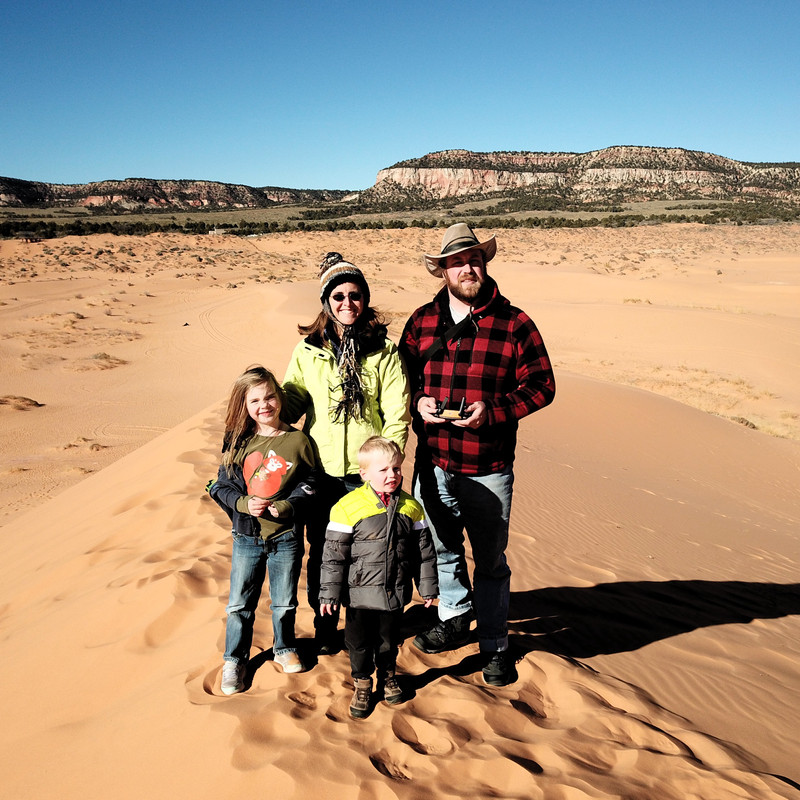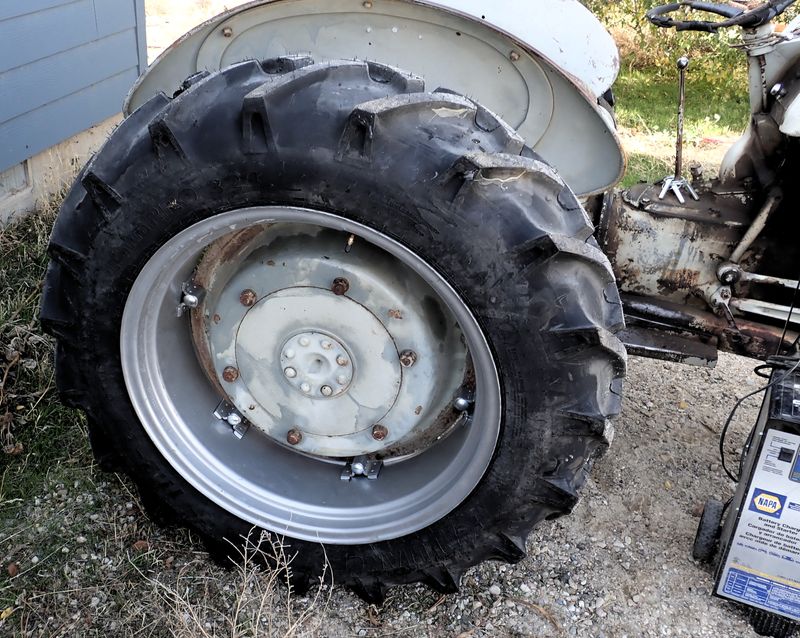This year, over Thanksgiving, we made a rather long road trip in the Volt down to Arizona to watch my brother run an Ironman and visit with family for Thanksgiving. I didn’t post two weeks ago because I was in the middle of the trip and had no interest in disrupting that which I was enjoying to post - but this week, you get details on what we’ve done, which works out to about 2600 miles in a Gen 1 Volt, with a family of four crammed inside. I wasn’t sure what to really expect out of a long road trip with a Volt, but I came out impressed!
Idaho to Arizona and Back
We set out on a Thursday morning to Arizona and got back the following Friday evening - so a full 9 days of travel. Two days down, three days back, a few days down there doing various things, and a lot of time driving through some very nice deserts! I’ve got family down that way, and one of the members of the antique car club we’re part of lives down there in the winter, so we had a good time potting around and seeing people.
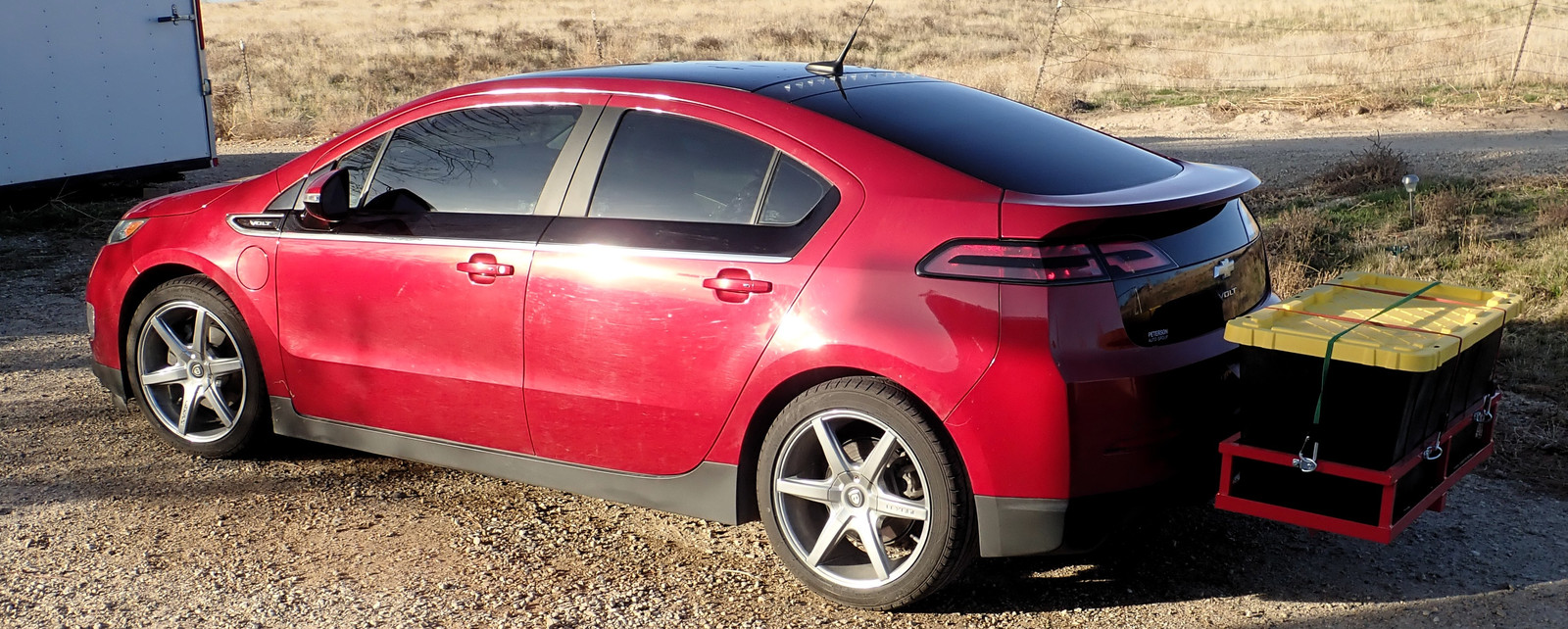
Making a Small Car Big: Add a (Second) Trunk
A number of the longer trips we’ve made over the years have involved either hauling a lot of stuff or dealing with the very real risks of bad weather (snowy mountain passes for Thanksgiving or Christmas with the possibility of winter camping for a day or two if the roads are closed), so we take the truck for those. It hauls more and has far better bad weather abilities than the Volt (which has a ground clearance of “Uh… what ground clearance?”). For this trip, all we needed to move were people. However, with a small car (the 1st gen Volt is not a large car) and a long trip, cargo space is limited. You can stuff a lot in the rear, but I also happen to like rear visibility if I can manage it. So, what’s one to do?
Well, if you recall from a month or two back, I’ve gone about adding a really odd thing to our Volt - a 2” receiver for a hitch. Sure, I use it for towing the solar trailer around - but the main reason I went with 2” is so I have the stiffness to run a rear cargo rack!
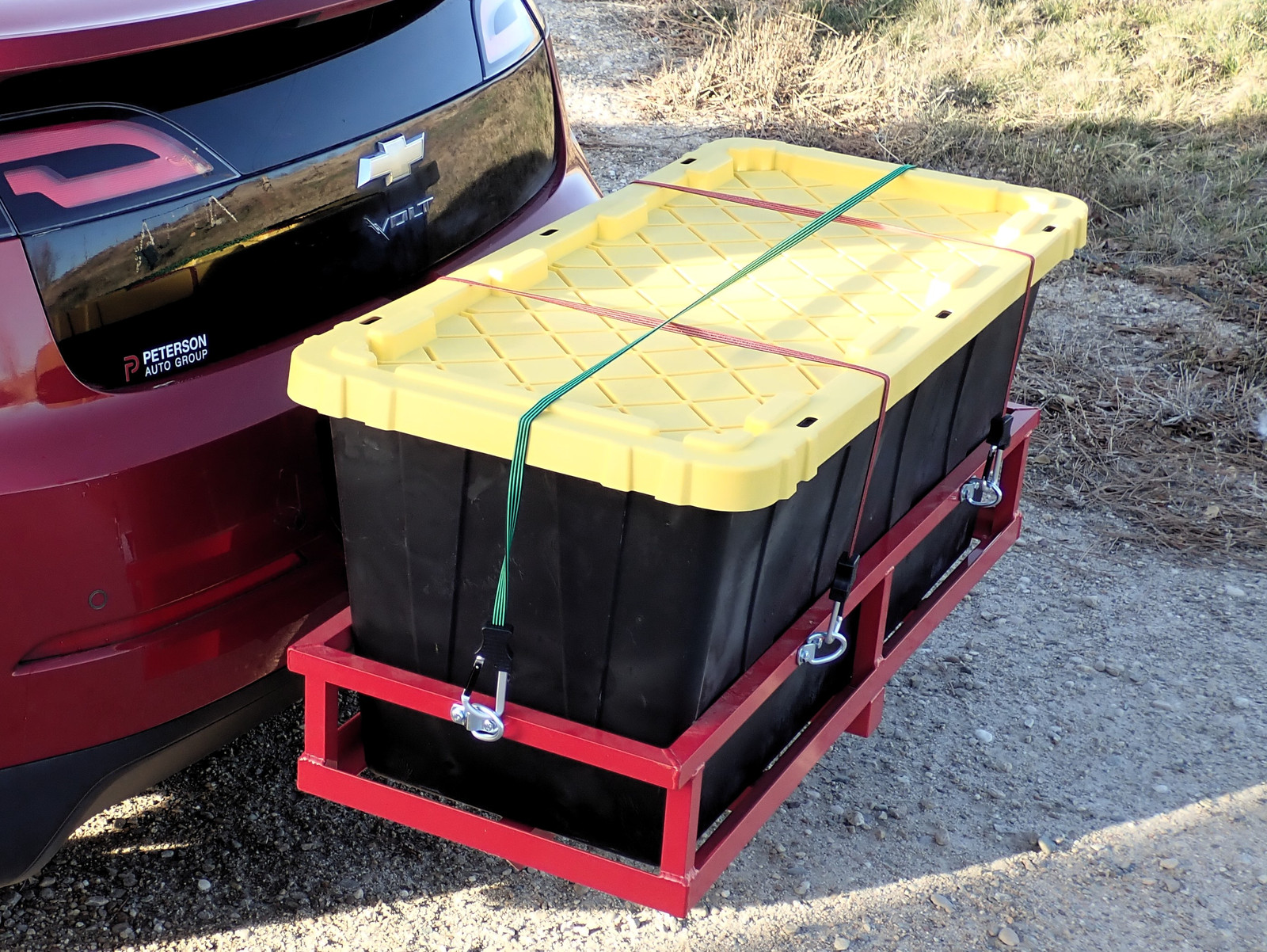
If you’ve seen pictures of antique cars, you’ll notice that some of them really don’t have a traditional trunk. Ours, for instance, has an actual “trunk” mounted on the back.
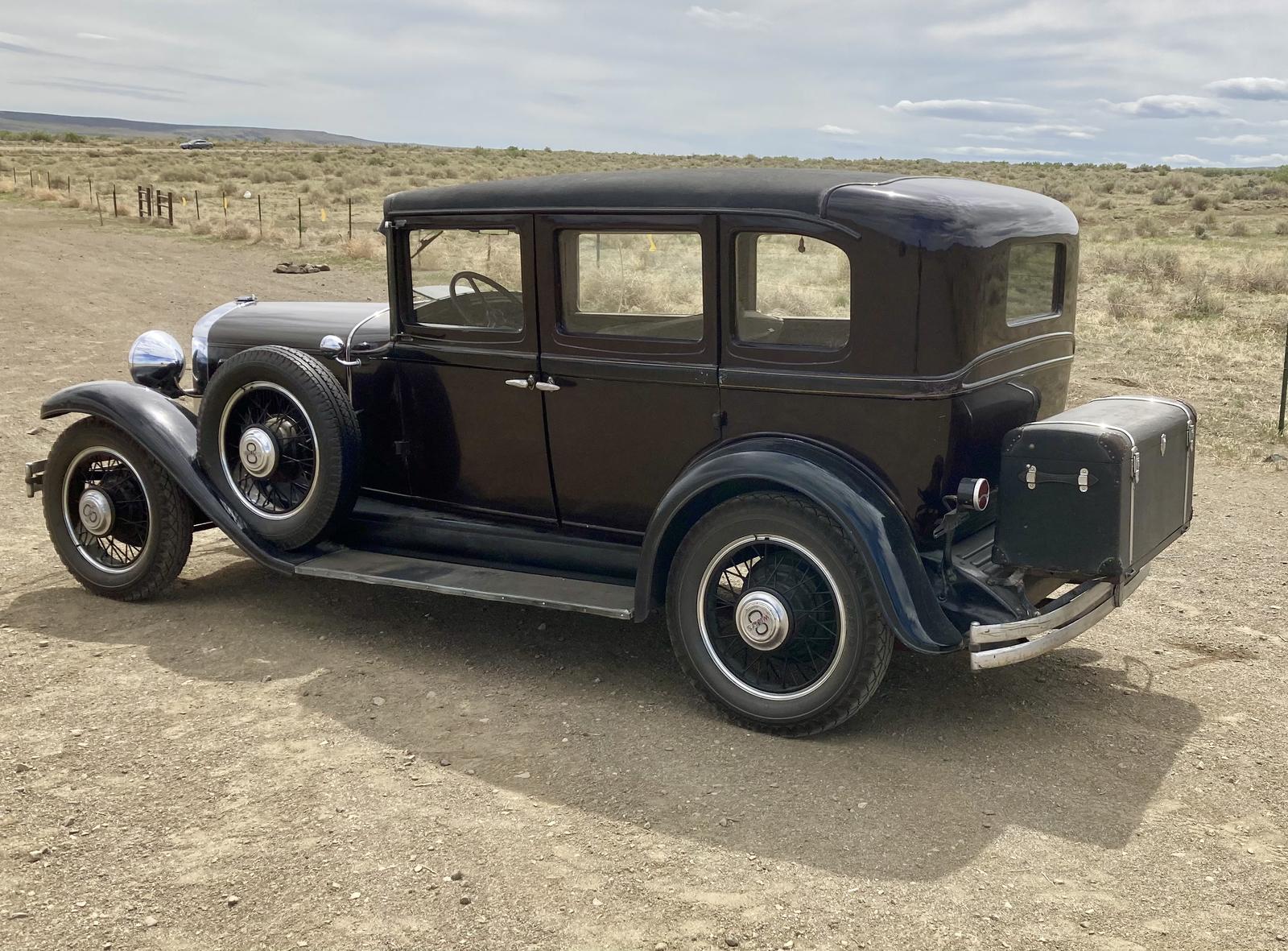
There are a variety of cargo racks out there that would work, but I’m also a fan of custom work that’s really well optimized for our specific car. This rack? Totally custom, locally produced, powder coated to match the car. I provided the measurements, we did some test fitting to figure out the angles for the drop to keep it clear of the bumper, and this rack is perfectly fit to a Gen 1 Volt with the Invisihitch behind the license plate.
One large waterproof container later, and we’ve got quite a bit of extra space! Now, with a receiver mounted to the bumper mounts, I wouldn’t suggest hanging a ton of weight back out this far, but a lot of the space on trips tends to be “light and bulky” stuff. Think pillows, sleeping bags, cold weather gear, sweatshirts, etc. We keep the denser stuff in the car, and the lighter stuff goes in the bonus trunk, which also means you can get the suitcases and charger out without having to unpack a ton of stuff “crammed around the edges.” Is this strictly needed? No, but it sure makes things a lot nicer!
Volting About the Interstates at 80 mph
This trip has been interesting for me in that it’s the first time I’ve really had the Volt out on a properly long highway trip at speed. Sometime in the past few years, speed limits have crept up to 80 on an awful lot of interstate in the western United States. I don’t normally do 80 - because most of my vehicles won’t do 80 at this point in my life. The Urals cruise at 50-55mph, I almost never have the truck over 65 (it’s geared for towing and is wound up pretty tight if you try to run faster), and most of the places we take the car are 55mph back roads - though part of this is by preference, as we’d rather take the winding roads through nowhere than take the interstate.
But for large parts of this trip, we were on 80mph interstates, cruising 75-85mph with traffic. I didn’t expect the Gen 1 Volt, with the small gas engine up front, to be a good highway car - but it really is! Running at 80mph, we’re getting 35+mpg with 4 people on E10, and there’s no shortage of power for hill climbing or passing. Cruise control works well (nothing adaptive, just a lever to click the speed up and down), and if you pass someone, the cruise control “catches” the speed on the way back down entirely smoothly. There’s none of the “slowing through the set speed and then it jerking you back up to speed” behavior that some older systems have. Toss the drive mode into Sport, and you’ve got the sort of rapid throttle response that just makes for a fun to drive car at speed. Road noise is quite low for the speed, and the whole car is just a solid, well planted platform up there. It’s also remarkably immune to gusting crosswinds compared to many things I’ve driven. Would it be my first choice for a dedicated highway pounder? No, but it’s an awful lot more capable of it than I’d realized!
Volting About the Mountains at 8000 Feet
On the other hand, unless you want to play Trucking Simulator, the Mountain Mode on the Gen 1 Volt exists for a reason, and you’d best use it if you’re climbing winding mountain roads. The gas motor on the Volt is a little tiny engine rated for 84hp - at sea level. Up in the thin air at 8k ft, that’s down to about 60hp, and if you’ve ever tried to wrangle 4500 lbs of vehicle and payload up a mountain on 60hp, well… it works. Just not quickly. There’s 150hp of electric motor on tap, and the difference between the two fairly rapidly runs the “hybrid buffer” out of energy, leaving you with “Propulsion Power Reduced” warnings and something that climbs like a loaded semi. Mountain Mode sets the “floor” on the normal EV battery capacity higher, leaving you with more to climb mountains - but you have to remember to set it every time you start the car during mountain trips. It works well enough, though you’ll still hear the Volt motor spinning at peak power output an awful lot. It’s not the most efficient operating realm for the engine, and we rarely managed more than 30-32mpg on gas as we ran through the mountains.
On the flip side, coming down a mountain in a Volt is literally the easiest thing I’ve ever done! Set the shifter in “L” to increase regen (the only difference between D and L is the regen strength), set the cruise control where you want it, and come on down riding regen. No need to touch the brakes, to bother with downshifting, or to have the engine turning quickly for engine braking. Just ride the regen and you’re able to hold whatever speed you want, all the way down!
The Way Out
Heading out, we took a stop early on to add some old boots to the shoe fence. I couldn’t tell you the history of why many miles of fence have shoes on them, but they do - so we added a pair of absolutely worn out winter boots from one of the kids. Most of the stuff our kids outgrow gets passed on to other families with kids (our church has a ton of kids, and clothing just circulates around in large bags and boxes), but this set of boots was coming apart so badly it wasn’t repairable. On the fence they go!
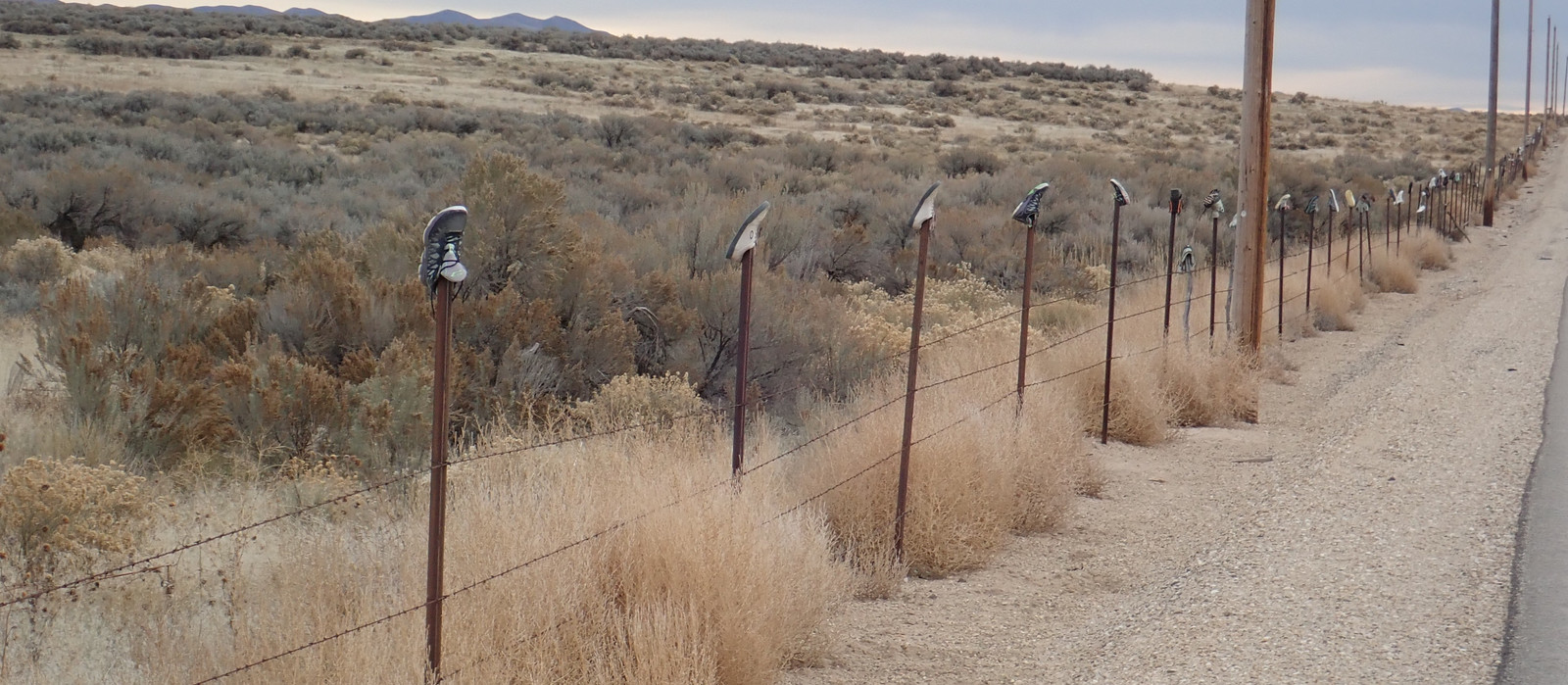
We took the interstate out through Salt Lake City, and came across quite a few of these absolutely massive turbine blades on the way. I’ve seen plenty of turbine blades on the highway - but these are something new. Images don’t do this thing justice - it’s massive, and exceedingly long. Interestingly, we saw other turbine blades of a different design coming the other way on the highway. It seems like “Use the stuff built near you” would save a lot of hassle, but… I’m not in the wind turbine siting and blade transportation business.
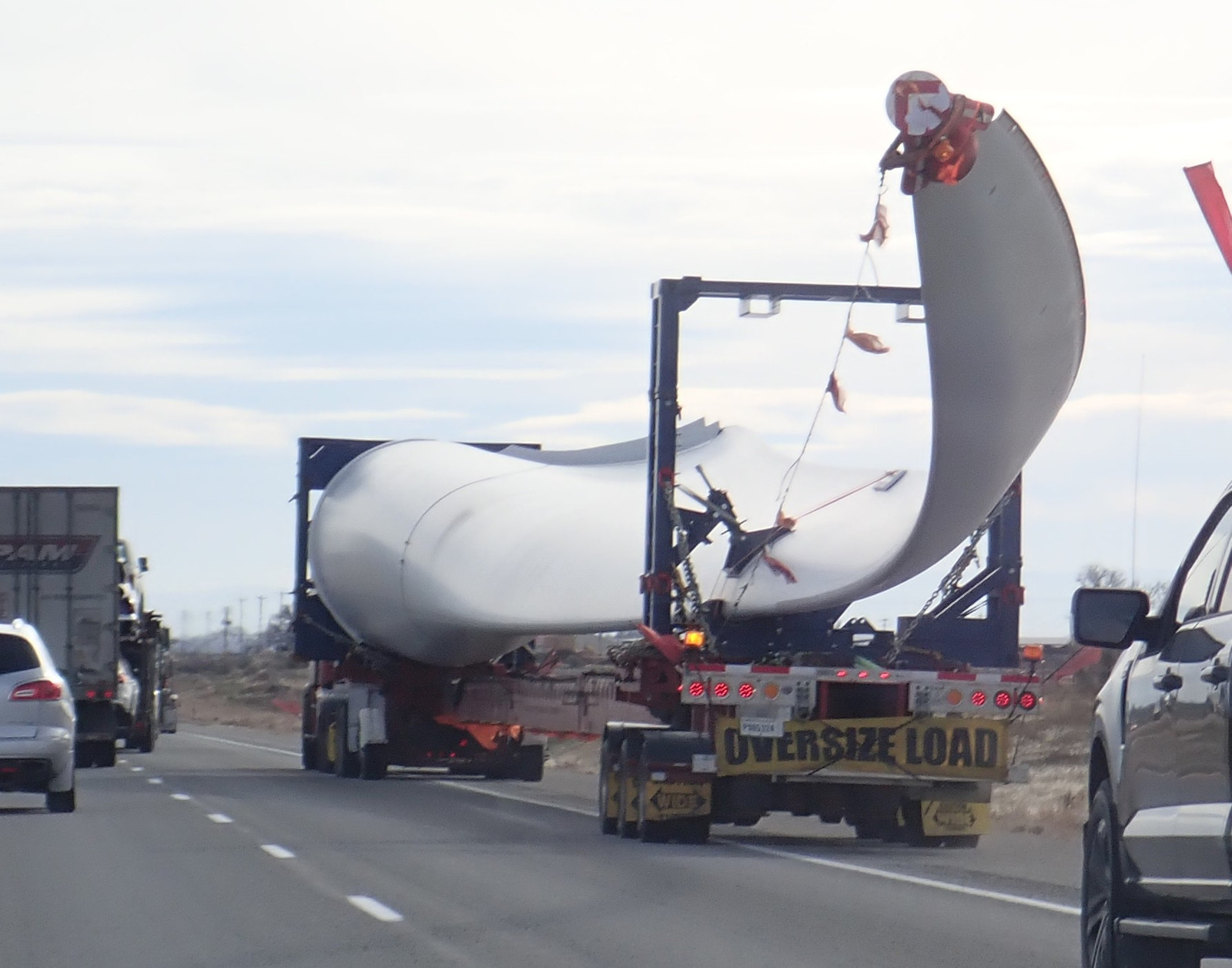
One of the very real perks of the Volt is that you don’t have to charge it on a trip if you don’t want to. But, if you can scrounge charging, it does help offset some gas use. I brought a charger that will work with 120V/240V, and a collection of electrical-code-violating adapters to let me hook up to just about anything I can find. The bulk of the time I’m out and about, I’m either using a standard 120V plug, or an adapter from a 14-50 plug (240V, dryer, oven, etc), but I can also adapt these things to use a 120V extension cord for extending 240V. The insulation is rated for 600V on anything decent, so it’s not a problem. I was able to sniff out outlets almost everywhere we were overnight!
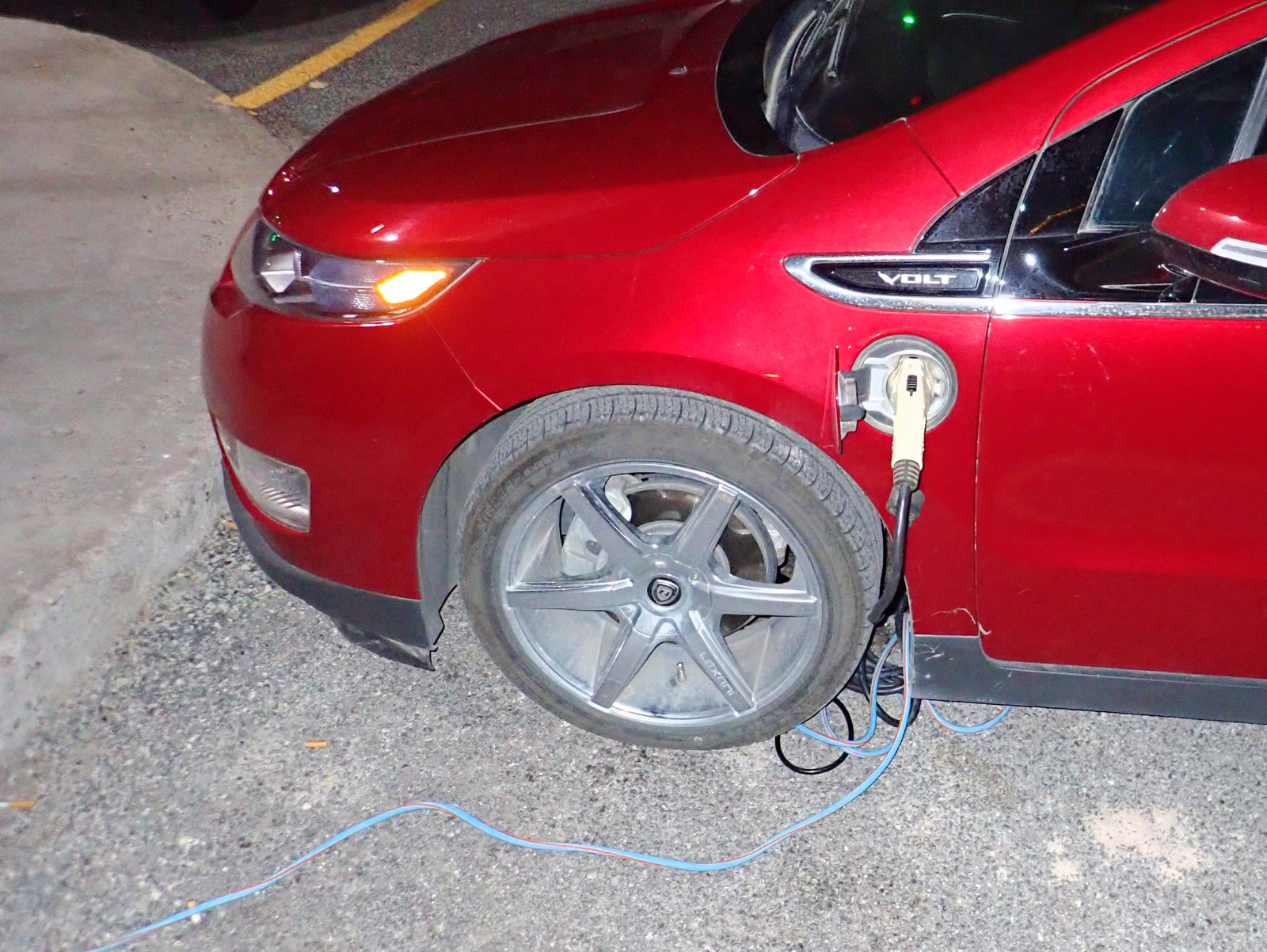
Day Two was off the interstate, driving through some beautiful desert in the middle of nowhere, just like we prefer!
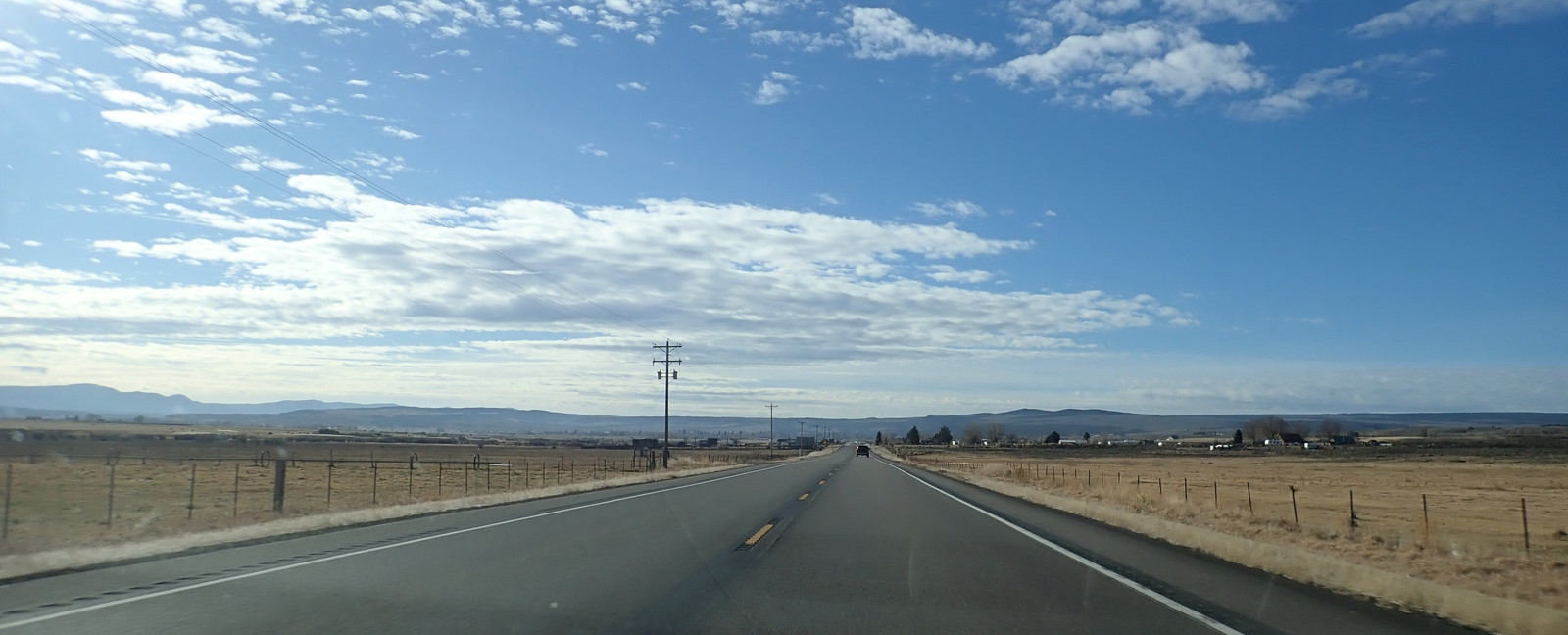
Utah and Arizona have some exceedingly beautiful terrain. Photos really, really do not do it justice - drive through them if you get a chance, and take the back roads!
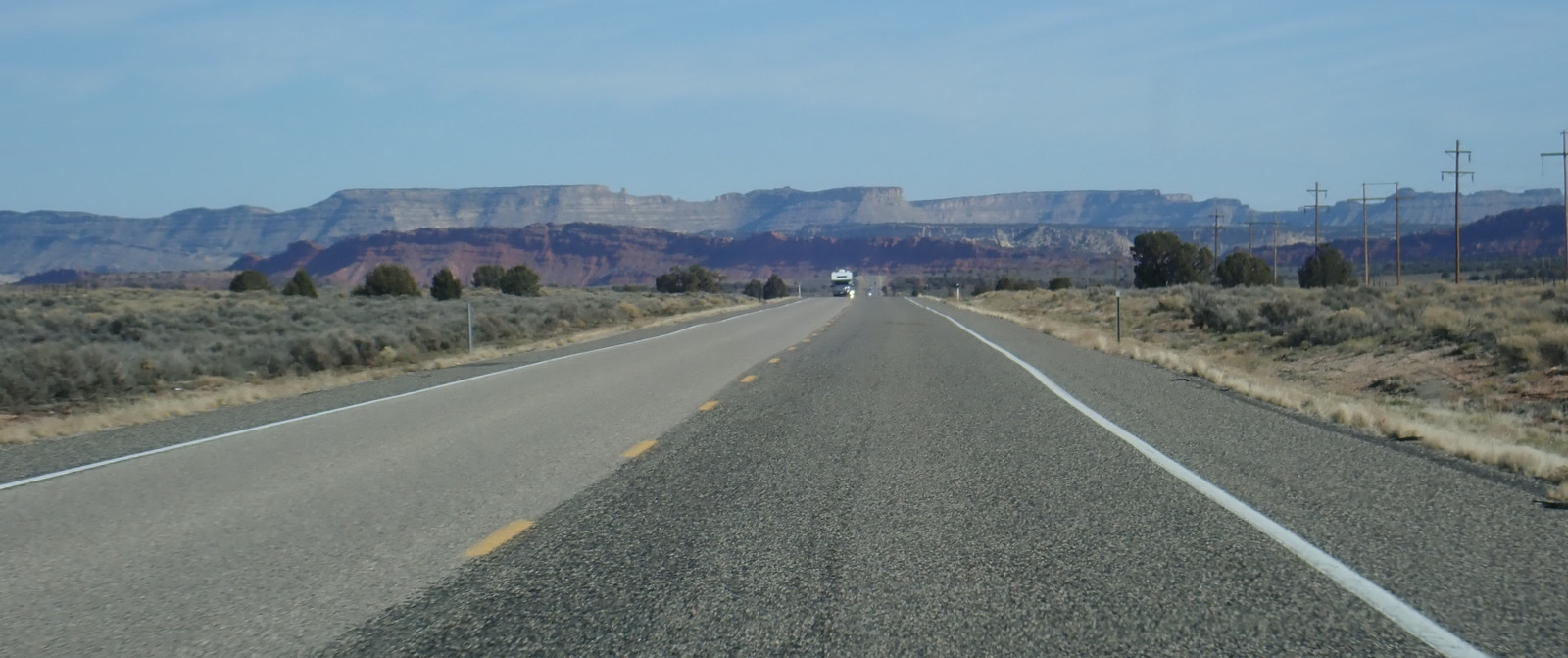
When we got to the hotel we were staying at, they didn’t have charging (so I sniffed out some 120V outlets to use). However… a bit of further investigation revealed something very nice behind a nearby hotel - Tesla Destination Charging! Now, I don’t bother carrying an adapter for that around with me - but, on the back of one of those was a perfectly good Clipper Creek J1772 charger!
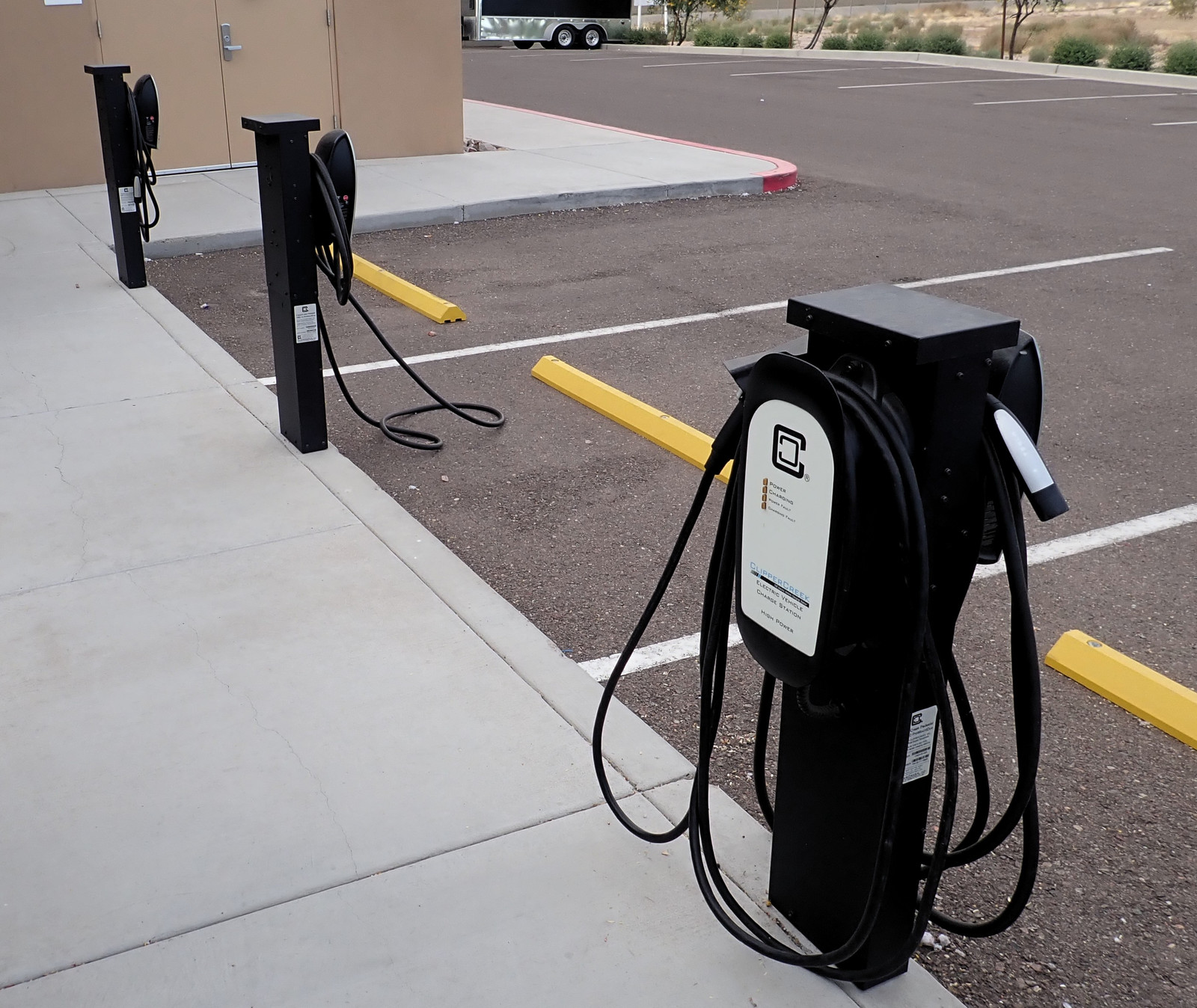
On our last day there (in the land of “Tis Better to Seek Forgiveness than Ask Permission”), I went into the desk of this hotel, verified that they weren’t owned by the same company as the hotel we were staying at across the parking lot, and left a $5 on their desk for charging. I’m fairly certain this confused the clerk to no end, and I’ve no idea if they have any way to actually route that properly, but I put a couple days worth of power in the Volt from their charger, so it only seemed fair!
We’d initially planned to take the rear trunk off when we got there, but other than blocking the reverse sensors, it wasn’t in the way, so we just rolled with it. I wasn’t too sure if having a blocked license plate would be a problem, but nobody seemed to care, including plenty of police we passed and some who were behind us on the highway for a few miles between A and B.
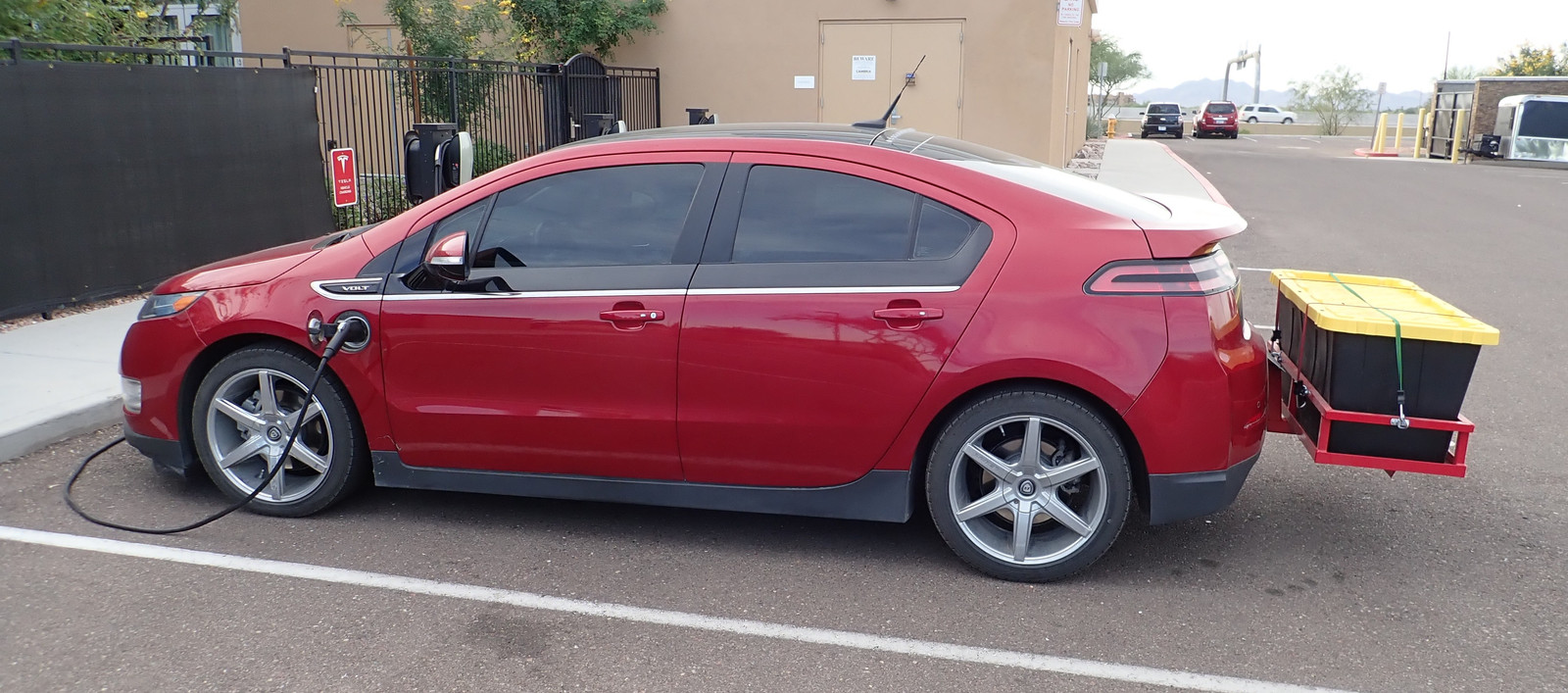
Suddenly, a DC Solar Trailer!
The morning after we arrived, we went to a local park to run some energy out of the kids (who had been in the car for an awful lot of hours). Off in the distance, I saw something familiar. Could it be?

Yes, indeed, it was! A collection of DC Solar power trailers I could go poke around! If you’re not familiar with these things, go do a bit of searching and read up on the drama, which, as of last update, has the CEO in jail for a 30 year sentence. Apparently, what may have been initially intended as a legitimate business turned into something that qualified as a literal Ponzi scheme (in the “paying off old investors with the money from new ones” sense), and accompanying outright fraud (things like “scraping the VIN stickers off trailers, putting new ones on, and claiming they were new production” and “GPS trackers were buried in the ground to pretend that trailers were deployed in places no trailers actually existed,” among other things) in what ended up being a fraud-based tax credit harvesting scheme. However, even if the company is gone, the trailers still exist - and work, though it’s up in the air how long they’ll run without maintenance. They’re flooded lead acid, and as you’ll see below, nobody’s watering them.
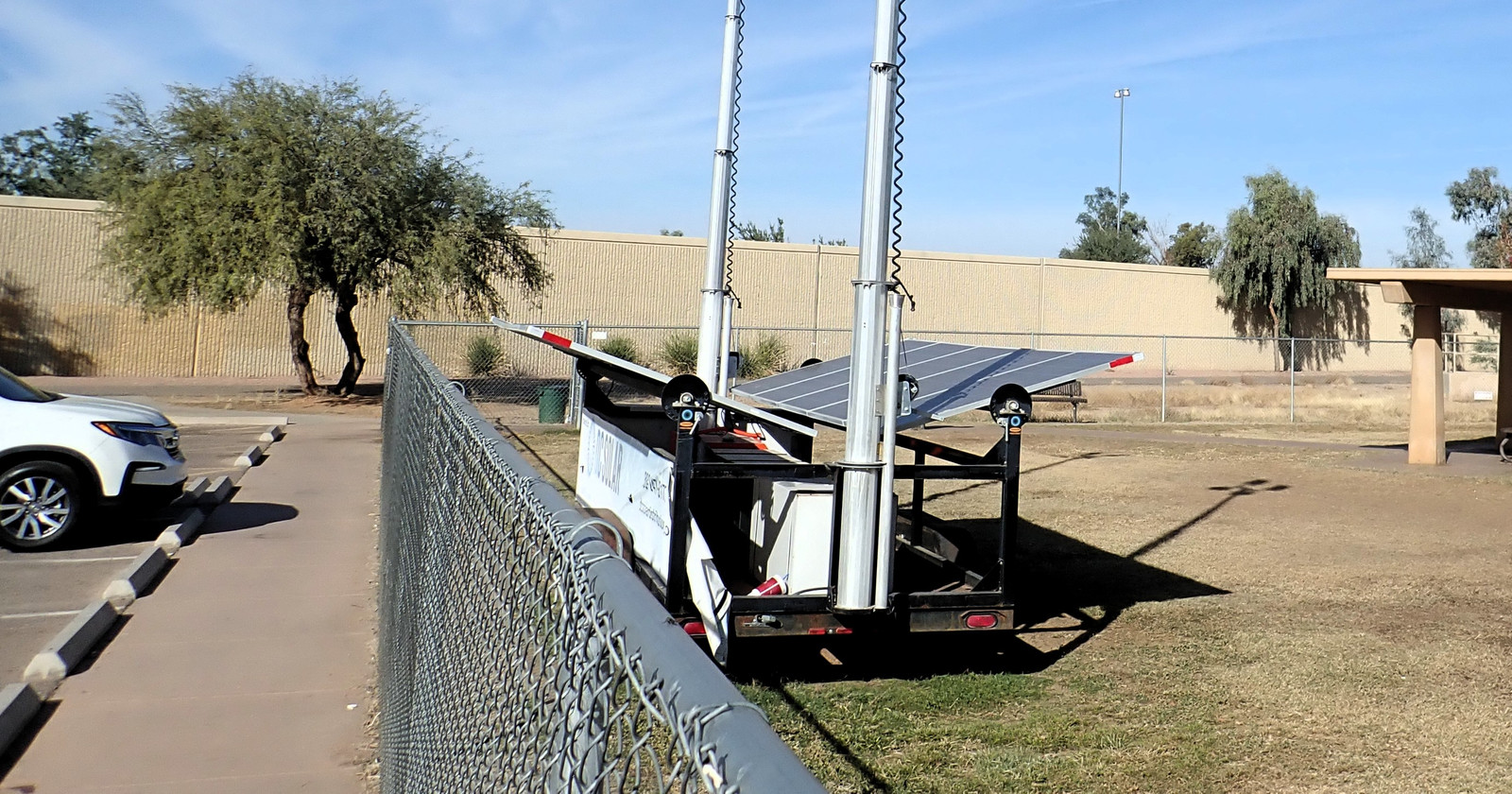
These trailers are light towers, and talking to some people at the dog park, do work as advertised.
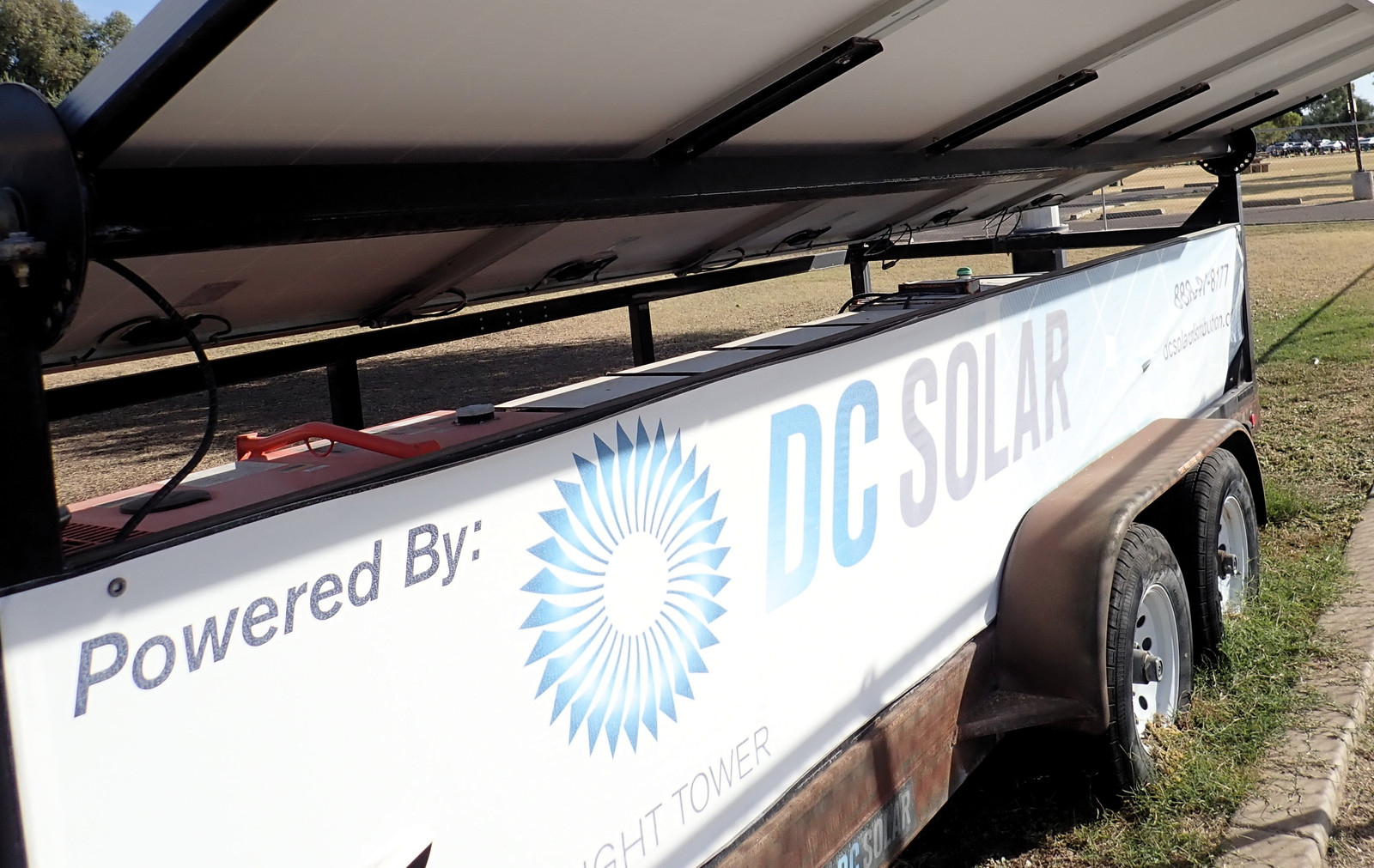
In the front, the power cabinet contains things like a Midnite Classic, which handles battery bank charging. Also, various inverters, light timers, and plenty of other goodies. Unfortunately, only one side of the cabinet was open, so I couldn’t get any really good pictures of the rest. There are plenty of reviews of these things floating around the internet if you want more details.

I like their solar panel angle adjustment system - pull a lever, rotate the balanced panels, and you’re good. Complex and not cheap? Yes. But they seem quite well built. The general trend of these trailers is, “Cost is no object.” Of course, when they exist for outright fraud, nobody is going to complain too hard about the pricing…
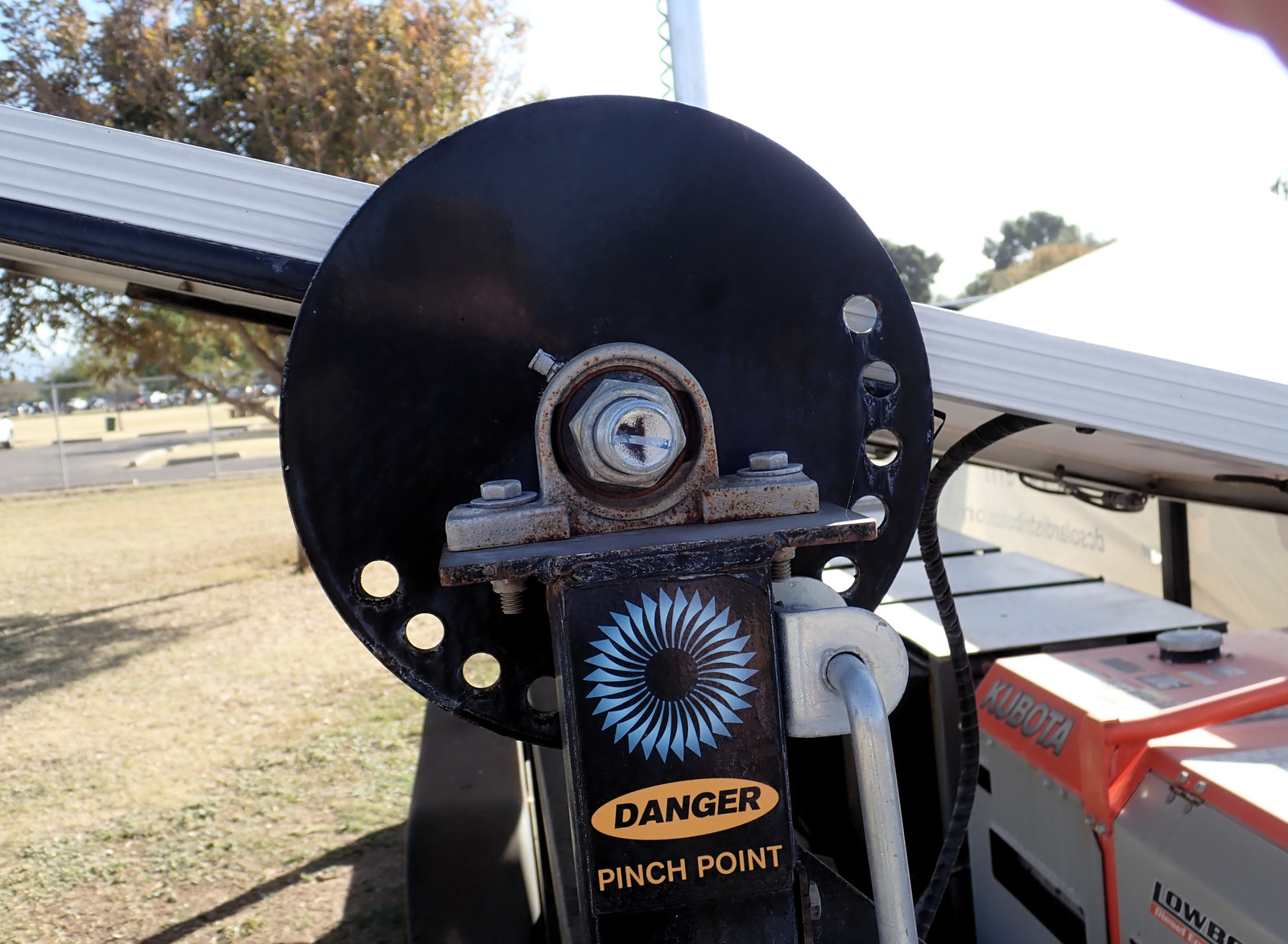
In addition to the solar panels, the trailers have a legitimately big (10kW) diesel generator that can be used to make up for solar shortages - which, with how underpaneled these trailers are for anything more than light duty, is probably a lot. This generator only has 12 hours on the Hobbs, which does make me wonder if this trailer has ever seen any serious use or if it’s just a light system. I don’t know how the auto-start system works, if there is one.

The diesel tank is a properly big tank, built in mid-2018.
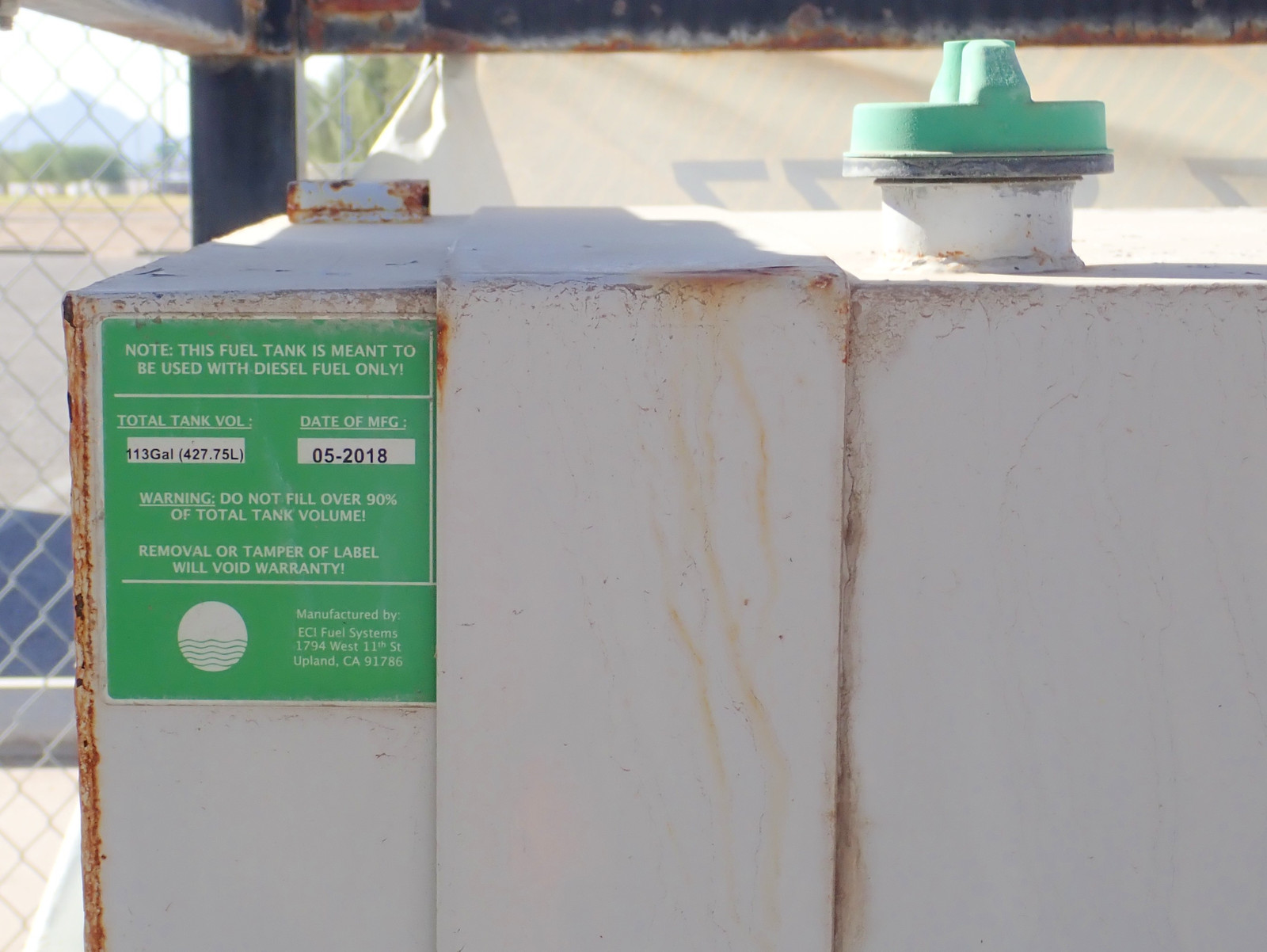
The last service was… in late 2018. Hm. I water my batteries 3x a year, and I’d expect that even serious flooded batteries need water annually. I don’t think this battery bank is going to be long for the world. Unfortunately, the battery covers were rusted in place, so I couldn’t check the water levels. That the covers didn’t move tells me an awful lot as well, though…
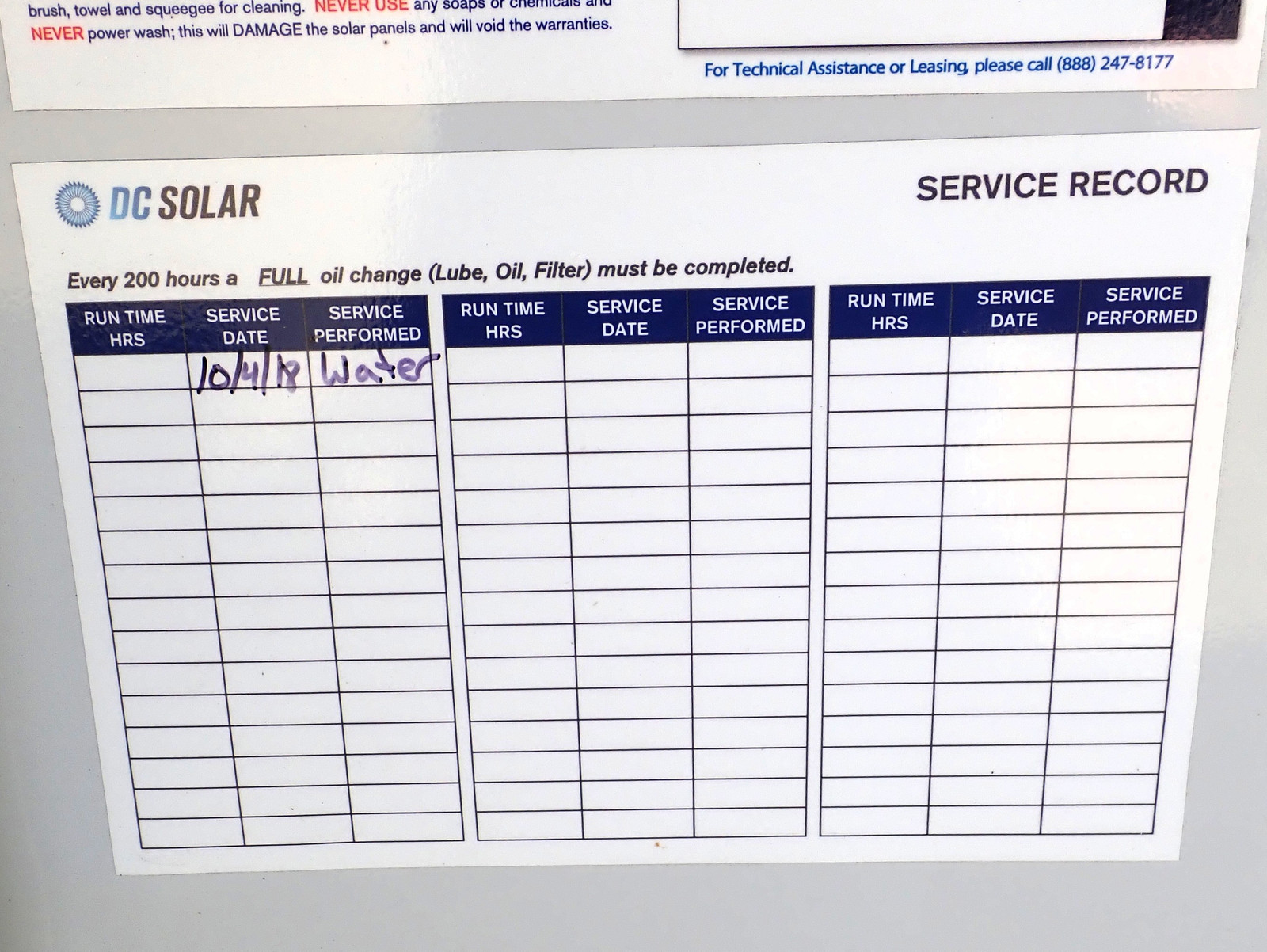
On the other hand, their wiring for the panels is exceedingly neat and tidy!
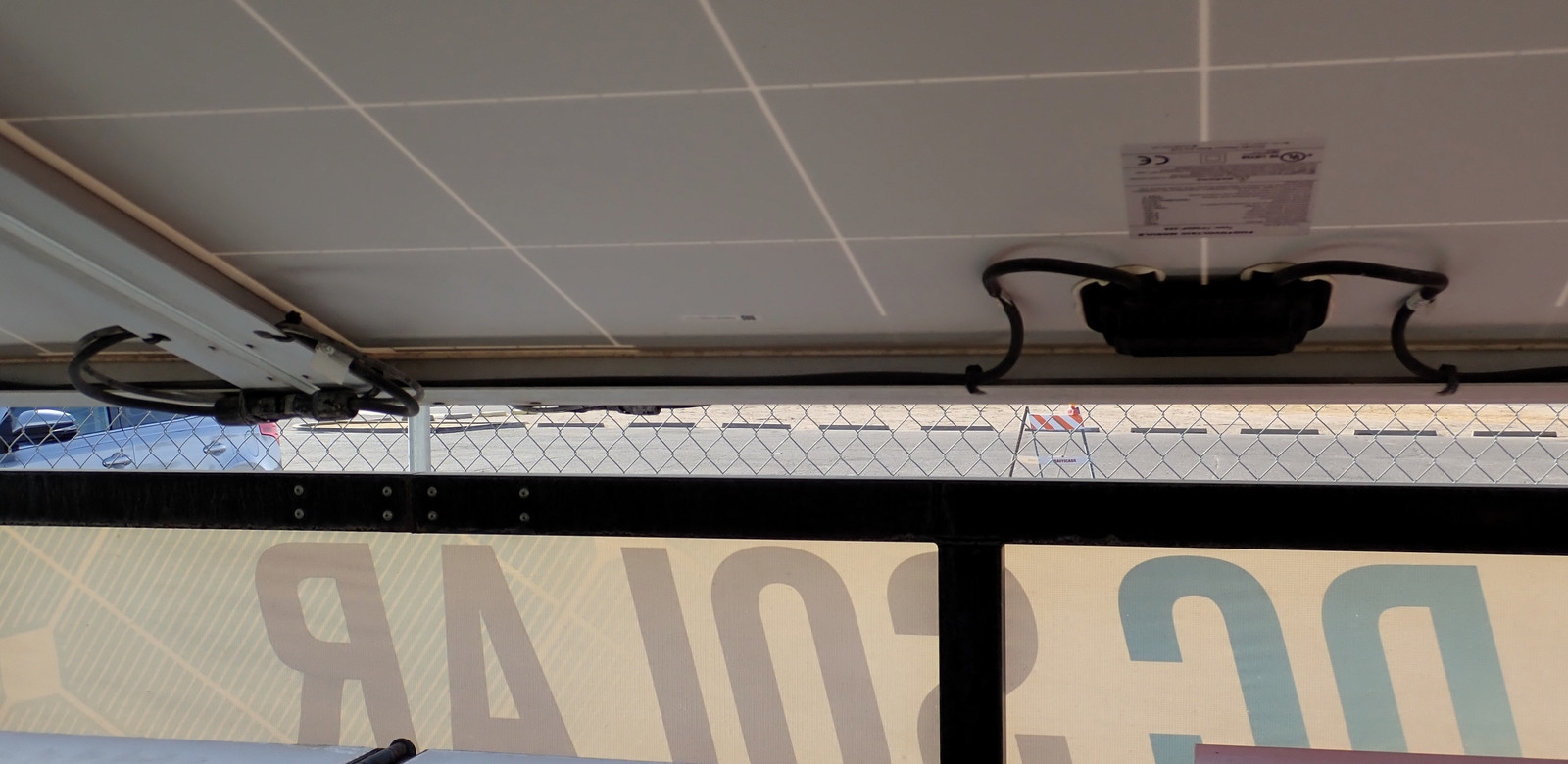
The actual trailer frame was built in 2016. It’s entirely unclear to me what the gap between the 2016 and 2018 dates are. Was the trailer built earlier and the tank upgraded? Was it new old stock? Is it part of the scam (which was well underway by this point)? No idea.
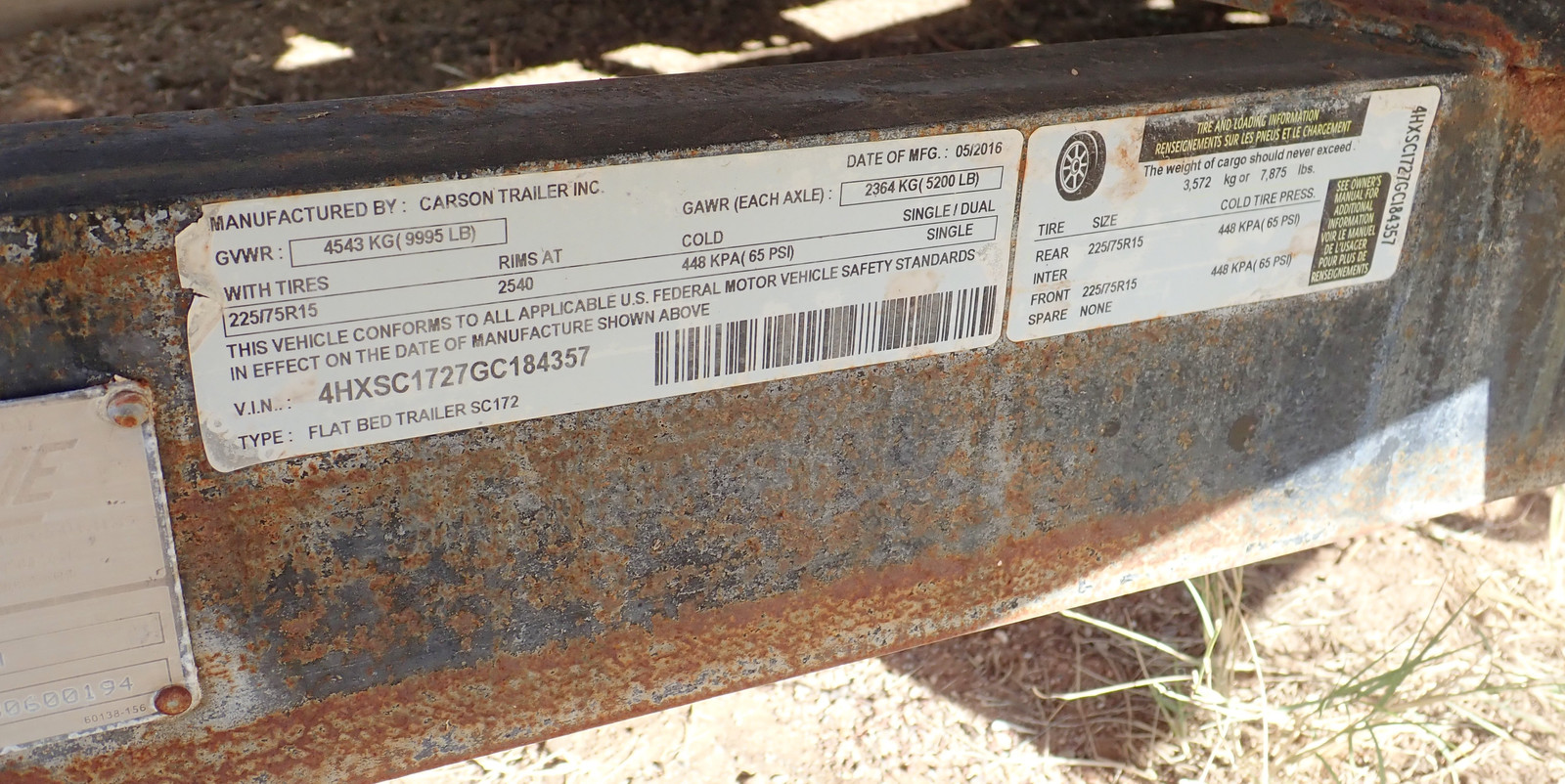
Lighting is LED, and apparently pretty good!
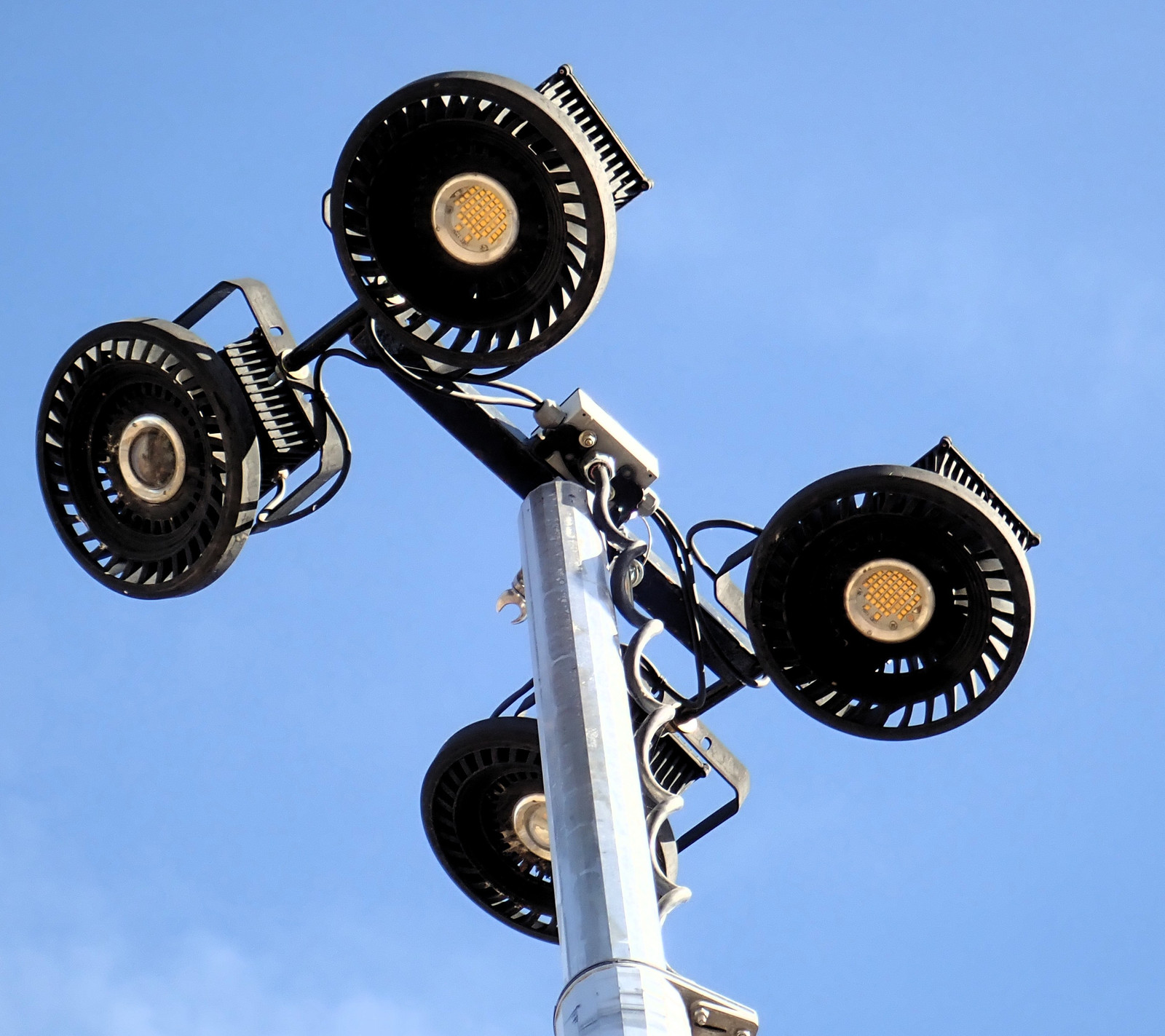
I was just happy to actually get a chance to poke around one of these. They’re nothing I’m interested in except for scrap (a bit on the heavy and overkill side for my needs), but it was nice to see one in person finally. I’ve known about them for a long while.
The “Arizona Boardwalk” Tourist Trap
With some free time, we decided to try out one of the local aquariums. Our kids love aquariums, we’ve traveled for aquariums before, and this one looked promising. It was a decent aquarium, but WOW was it expensive. The website really went out of the way to hide pricing… so the $40/person (including kids!) really was a shocker. With a few small purchases at the gift shop, we were out $200 for a few hours at the aquarium. Whoof.
However, it was a pretty solid aquarium with some interesting features.
The whole “Boardwalk” thing is just a big strip-mall-in-a-circle filled with about all the tourist traps you could possibly want, including a place that seemed to be nothing but weird artwork for the purpose of taking Instagram selfies (at least according to the person at the desk). It does include a large tractor tire, though!

On entering the aquarium, it’s strongly suggested that you go check out the bathrooms in the lobby area - because instead of a mirror behind the sinks, they have a shark tank.
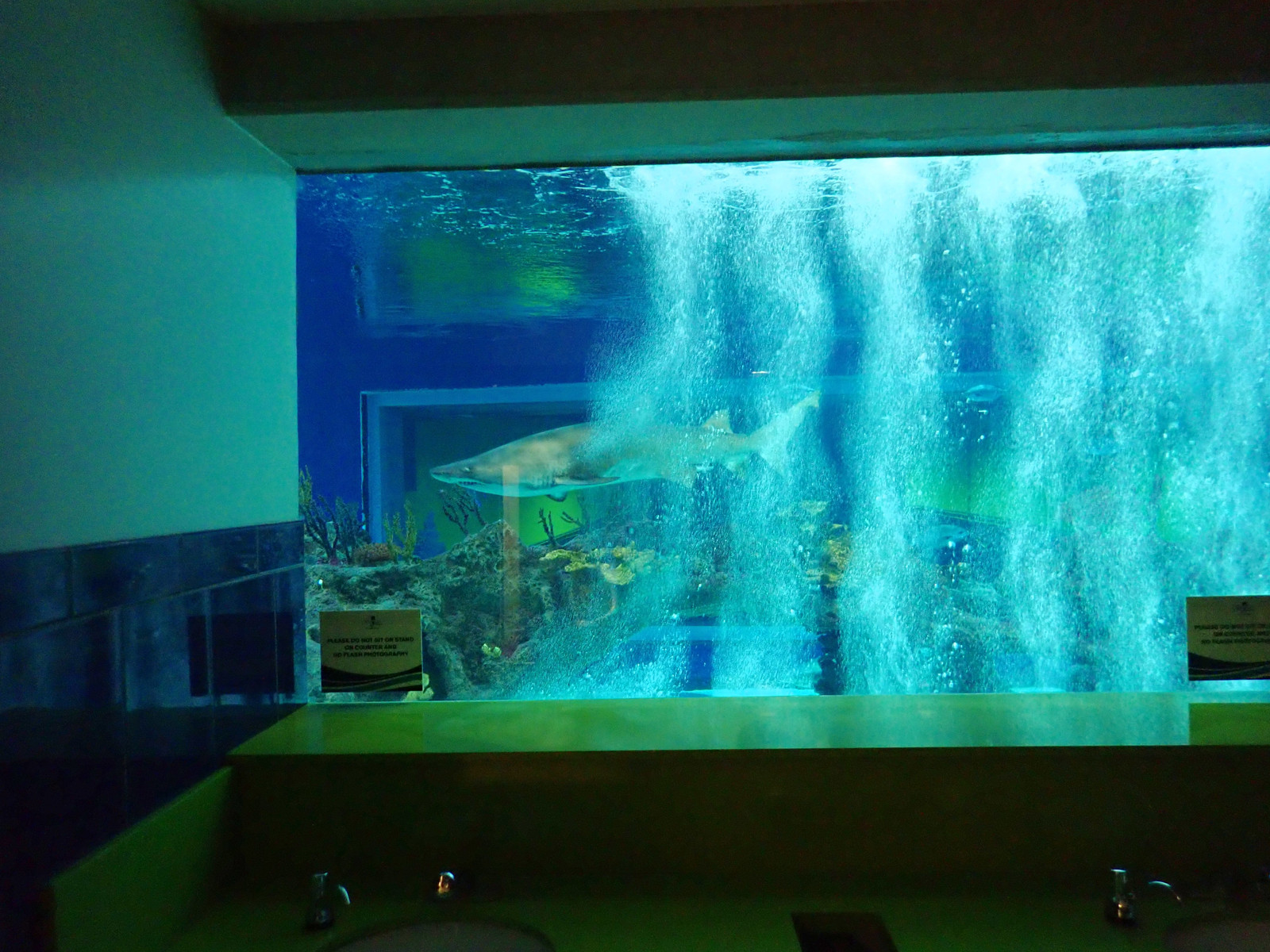
It certainly makes for an interesting bathroom!

We wandered through the aquarium, and got to see a number of interesting things - including some feeding times. These fish open their mouths and the whole front of their body turns into a passthrough filter sort of device - huge openings, huge waterflow, and snacks get filtered for consumption. Unfortunately, they do have some trouble getting food off the bottom of the tank with that snout…

A toucan…

In what was a bit of a theme for this trip, a Windows 10 “You Haven’t Given Us Your Email Address Will You Please Do So?” nag screen. I don’t know why some basic “Go that way for this area!” signs were running Windows 10, but they certainly seemed to be. I mean, don’t you use full featured desktop OSes to cycle a couple PNGs around on a screen?
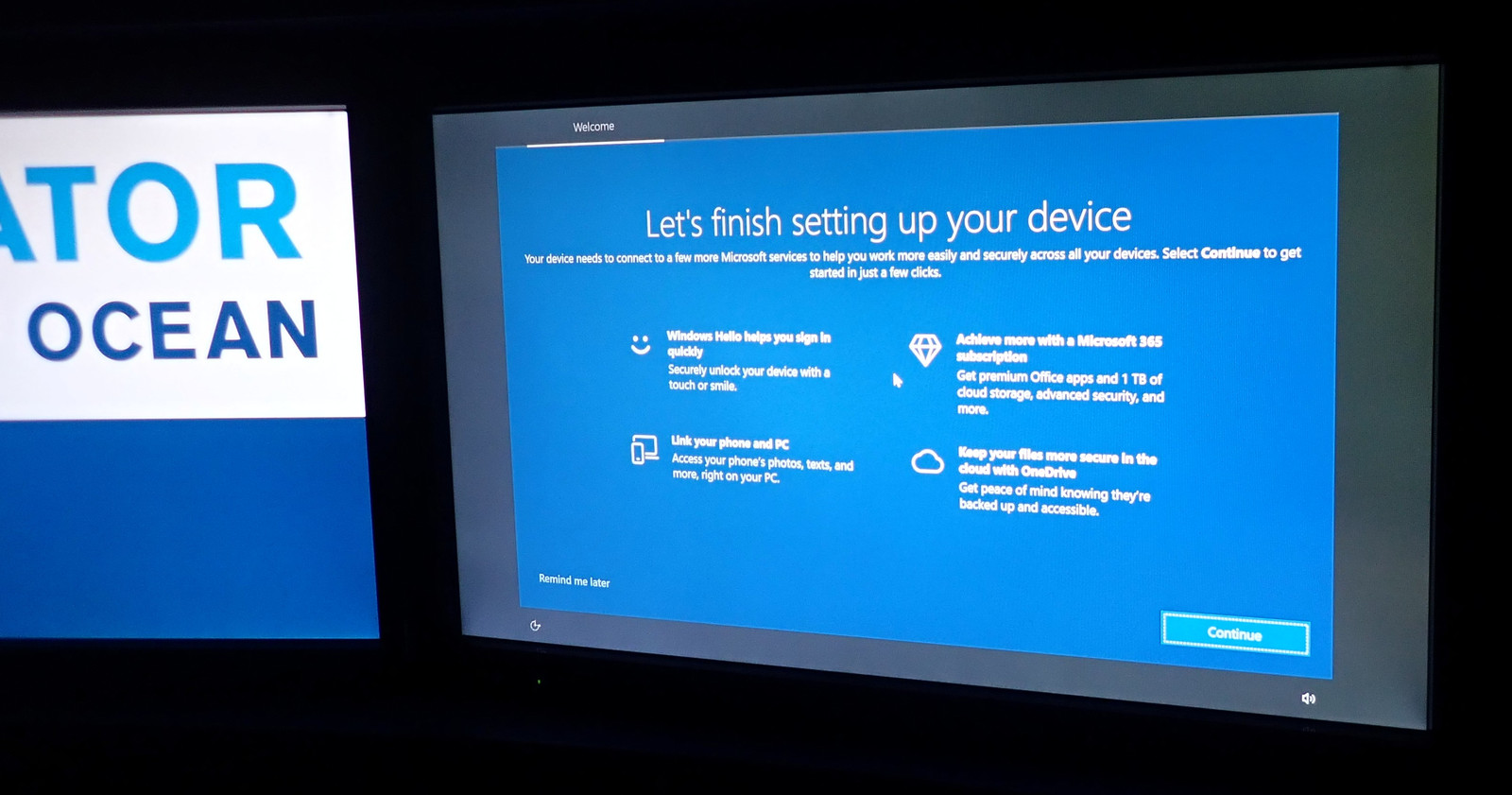
And more sharks, including some with a rather hunched back.


Outside, there’s a huge gorilla made of various metal bits welded together. Any of those pieces look familiar?

They’re all vehicle parts! I have no idea how you go about acquiring enough disassembled engines, transmissions, exhaust systems, and the like to weld up a a massive gorilla, but someone sure managed! That actually would have been a lot of fun - “Go spend a month at the junkyard and disassemble everything they’ll let you for flat parts.”

Out to Salome
On another day, we drove a few hours to visit a family friend over in Salome. My wife and I have been out there before - we did a long cross country in a Cessna 150 back when we were dating to go visit out there (and still liked each other afterwards enough to get married!), but this time we showed up on land - and then proceeded to take a pair of Geo Trackers out into the desert! I love these little cars - they’re light, simple, 4WD, and quite capable off road, while being cheap to run, easy to repair, and there’s just not a lot to go wrong.
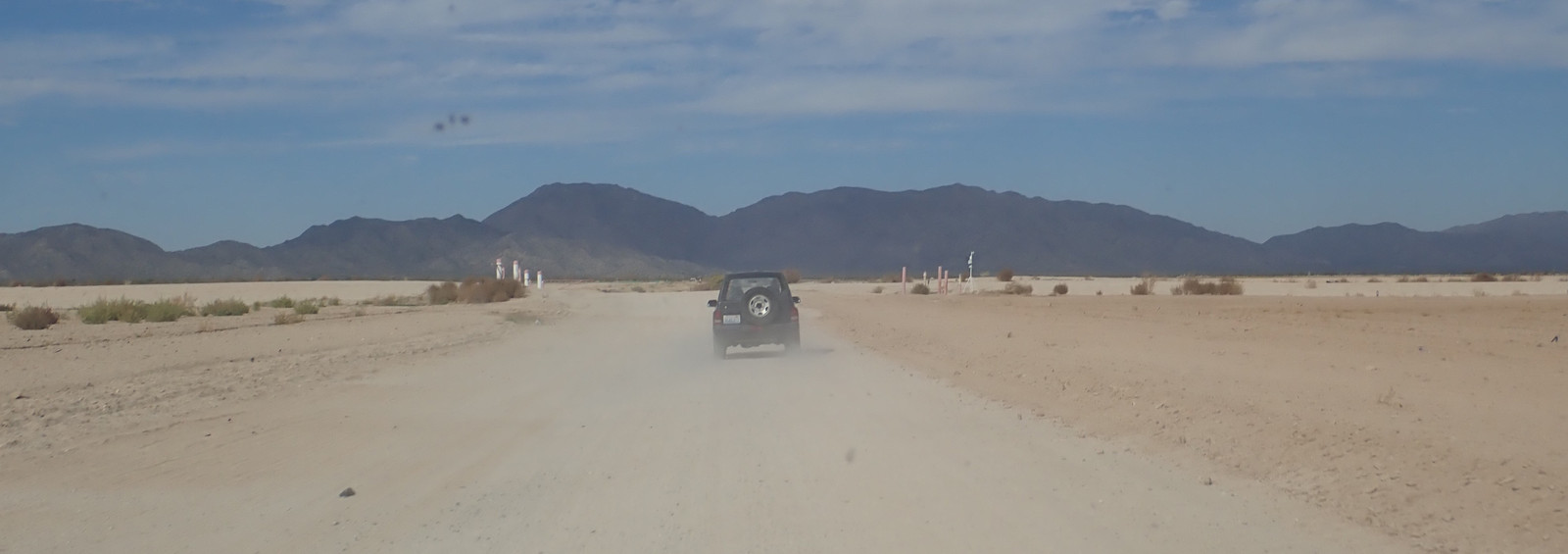
We went out to the dip in the center via an awful lot of dirt Jeep trails. It was used as an overnight stop on some prisoner transfer routes.
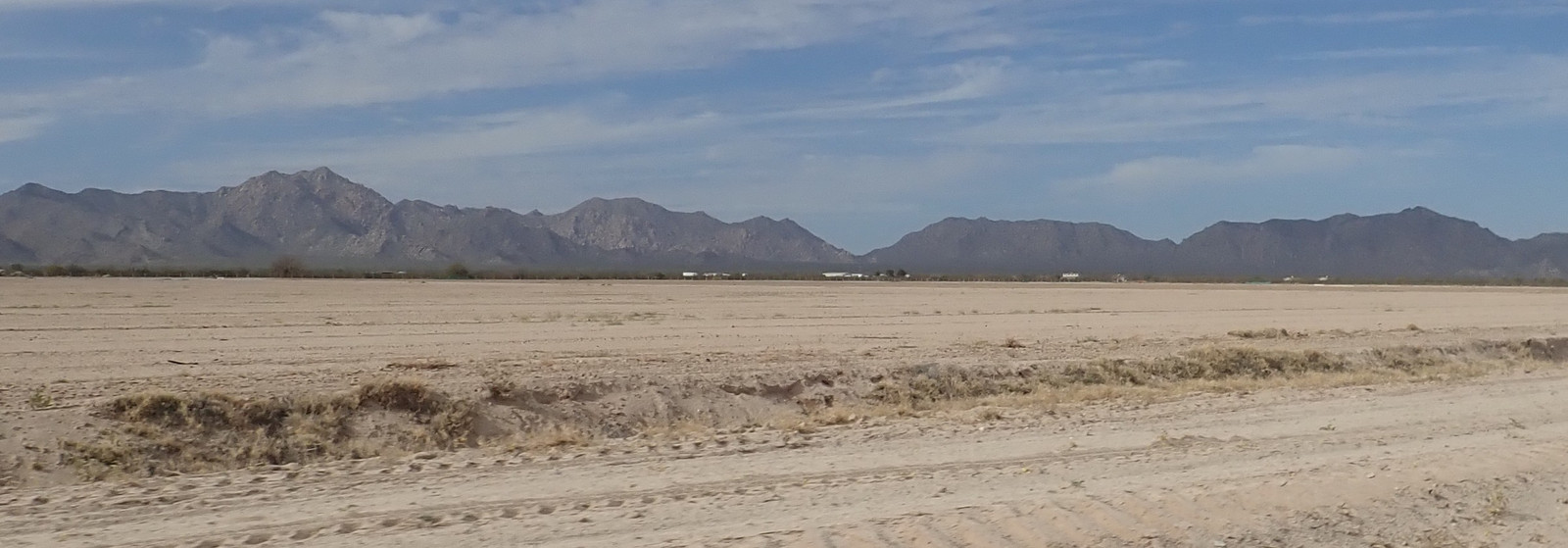
Maybe keep the wheel out of the ditch… and, yes, I know the coolant temperature gauge doesn’t work. Like most AZ vehicles, this one has the “dash carpet” that helps protect the dashboard from the blisteringly hot sun. If you don’t have that, the dash will start cracking inside a few years from the extreme heat. In Phoenix, in the summer, the interior of a car can hit 160F, with the dashboard surface peaking over 190F. Yes, that’s hard on plastic. Also, this is why “automotive grade” stuff exists - it’s proven to not fail at these temperatures. “Automotive grade” testing covers from about -40 (F/C) to 105C/221F. It’s brutal - but the interior of a car can be quite brutal as well.
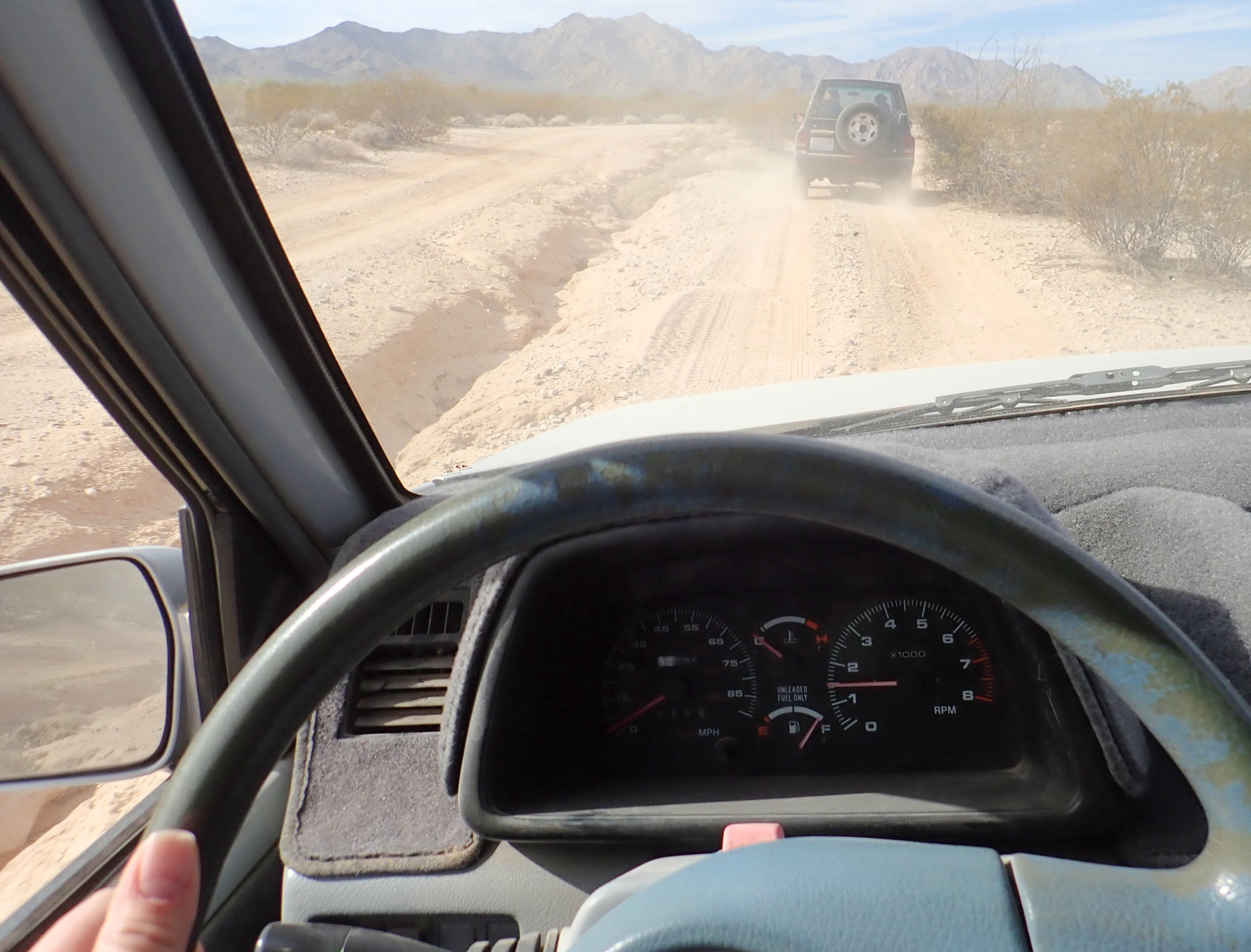
Lots of cacti! Including some dead ones.

I love just how harsh some of the desert terrain is out west. It’s not rounded like you find out east.
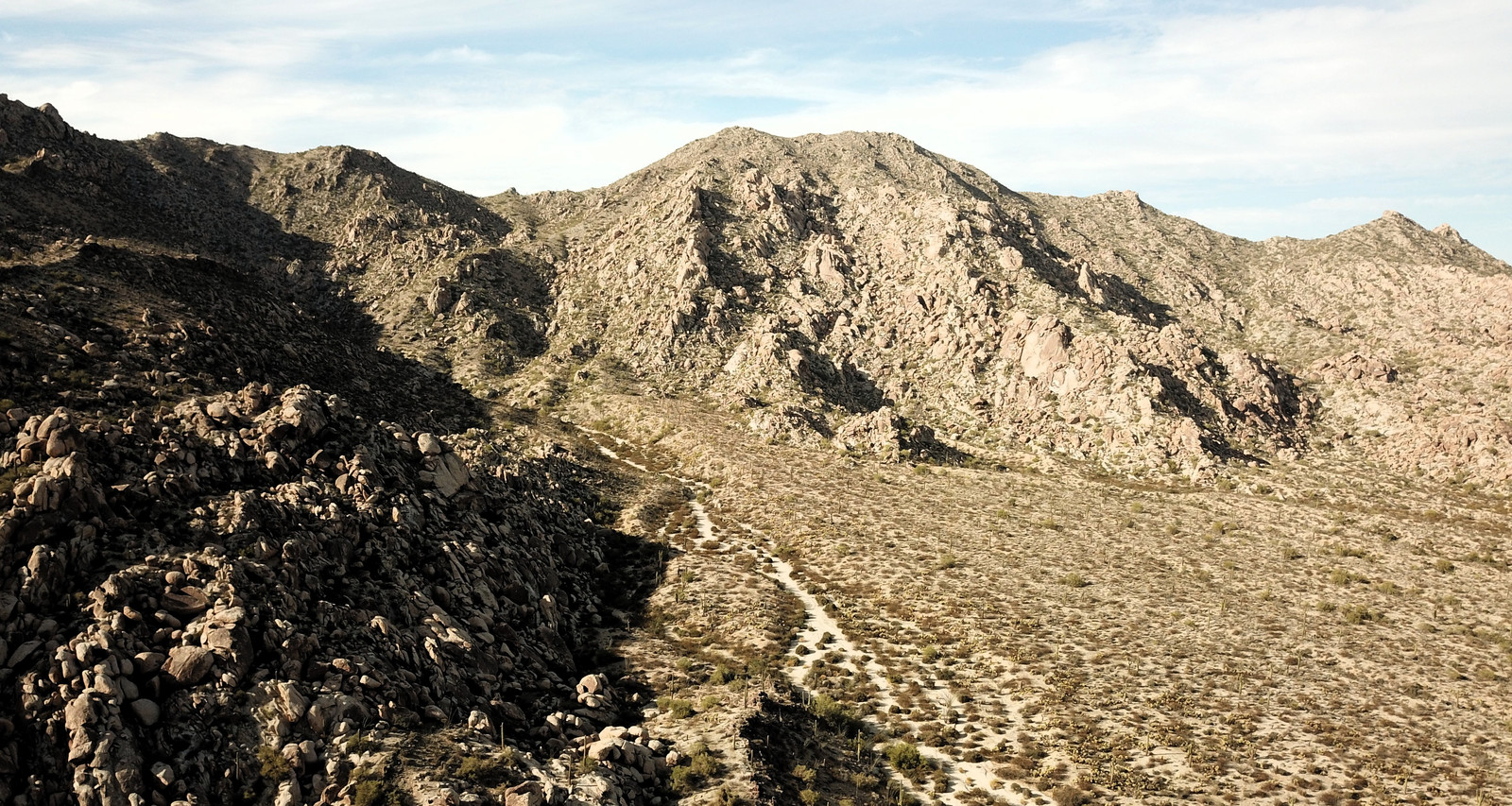
More cactus! The Saguaro are a favorite, and we try to get pictures of the family by them any time we see them.
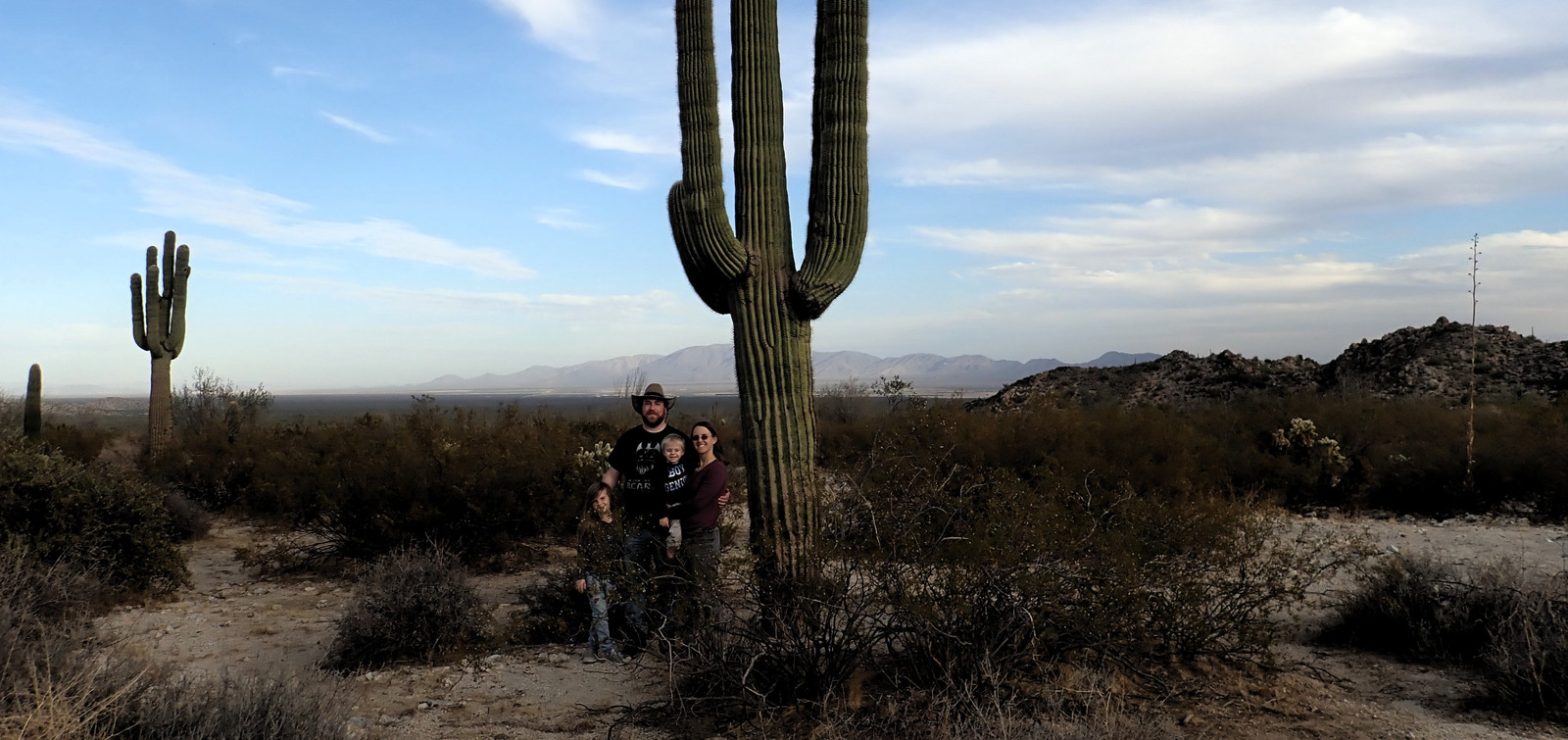
Finally, my son is amazingly good at talking people into tractor rides. Or, perhaps, at badgering people until they offer a tractor ride. This tractor has more levers than our tractor - and they make the bucket move! He had a grand time manipulating the bucket controls! My social circle certainly considers owning a tractor to be a normal part of life…
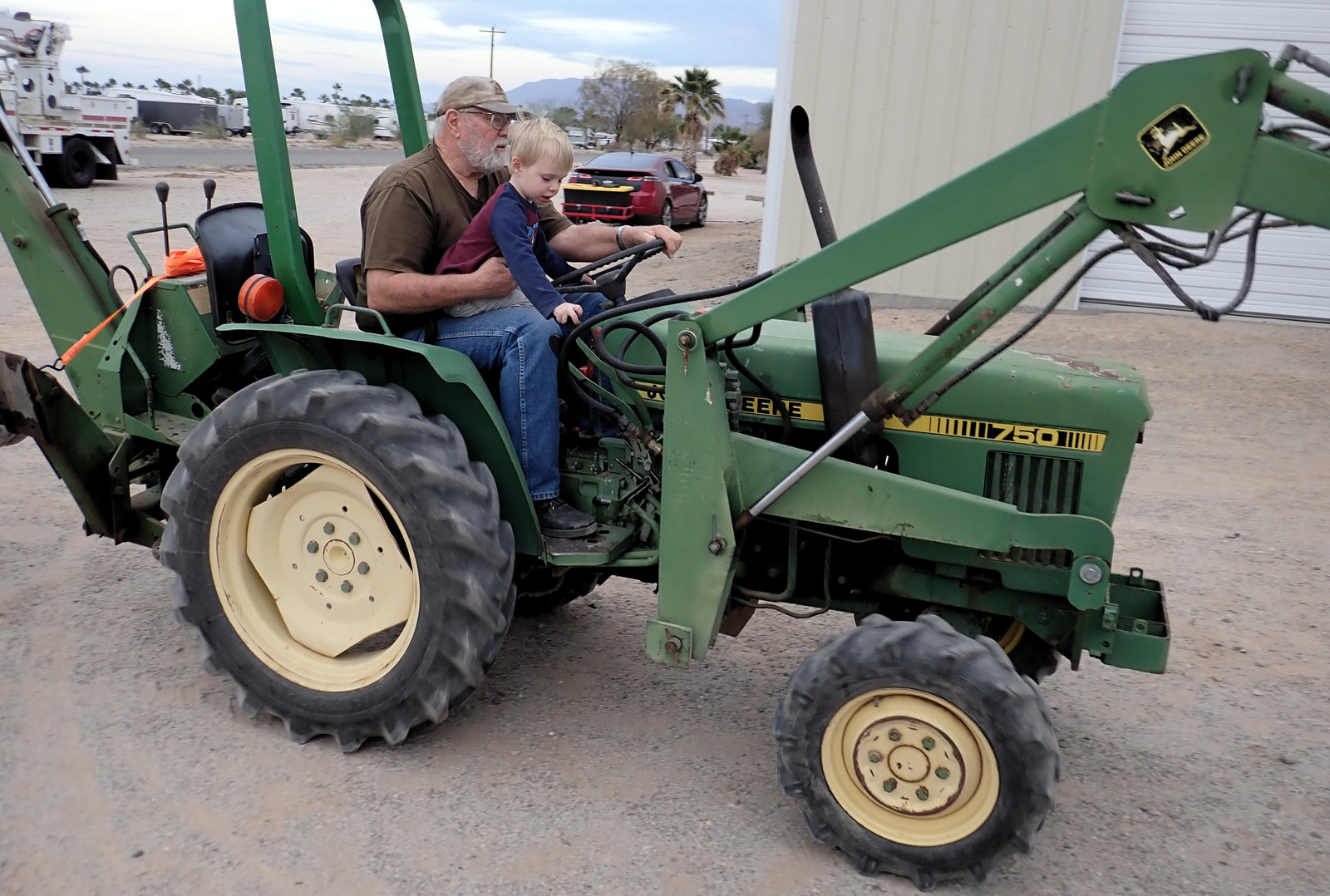
And, finally, back at the hotel, we found both of the kiosk PCs badgering the user! These PCs are running some “anonymous use, clean the system and wipe the user data when you log out, auto logs people out” software - but that doesn’t stop Microsoft from displaying this, obviously in conditions when it never used to display it.
As far as I can tell, Windows 11 solves the “problem” with Windows 10 that Microsoft just can’t manage to extract enough user-linked data out of the system, and can’t deliver enough customized, personalized advertisements directly to your OS. No, I’m not planning to use Windows 11, why do you ask?

Heading Back: The Grand Canyon and Coral Sand Dunes
On the way back, we planned to stop a few places that were more or less on the way. The first day, we went to the Grand Canyon - and discovered that going to the Grand Canyon during Thanksgiving break is an awful idea. The place was packed, and I mean “Christmas Eve at the mall” type packed in a lot of areas. Not quite how I prefer to see the canyon, and the kids weren’t terribly impressed with it. They’re the wrong age for this sort of thing, and weren’t amused by the amount of walking along the rim trail my wife and I wanted to do.

I do so love desert landscapes and near-infinite visibility.

On the other hand, I know that the roads go around this stuff. It had to be concerning to be one of the early travelers crossing the desert in wagon trains, and seeing things like this. Is there a way around? Eventually, yes. Because you’re sure not going to get a wagon up these cliffs.
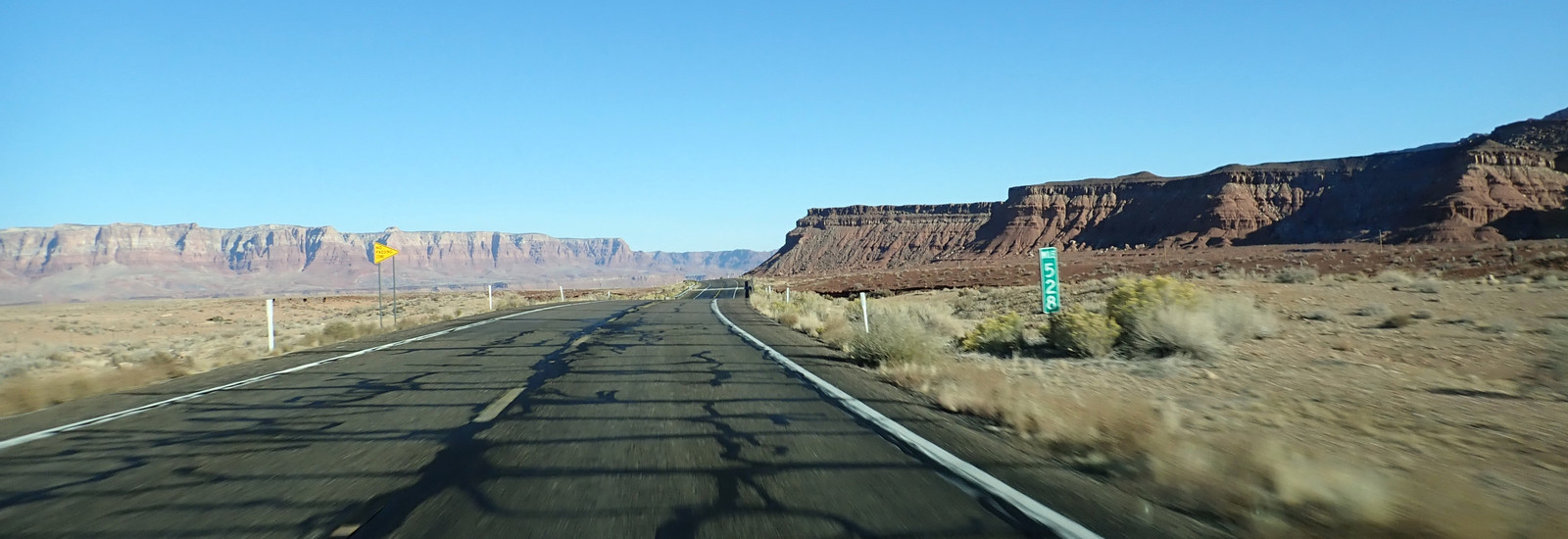
Before the trip, I installed some vortex generators on the Volt. Supposedly, they help improve high speed aerodynamics, and while I never did a yarn test to verify it, after a number of days driving through dust, you can see that they are, in fact, influencing the airflow and creating vortexes that spread out down the window! One of these days, I’ll tape some yarn to the window and run at speed to verify that they’re doing what they’re supposed to.

On our second day, we ran into some of this - long, straight road, twisting off into the mountains. See where the road enters the hills?
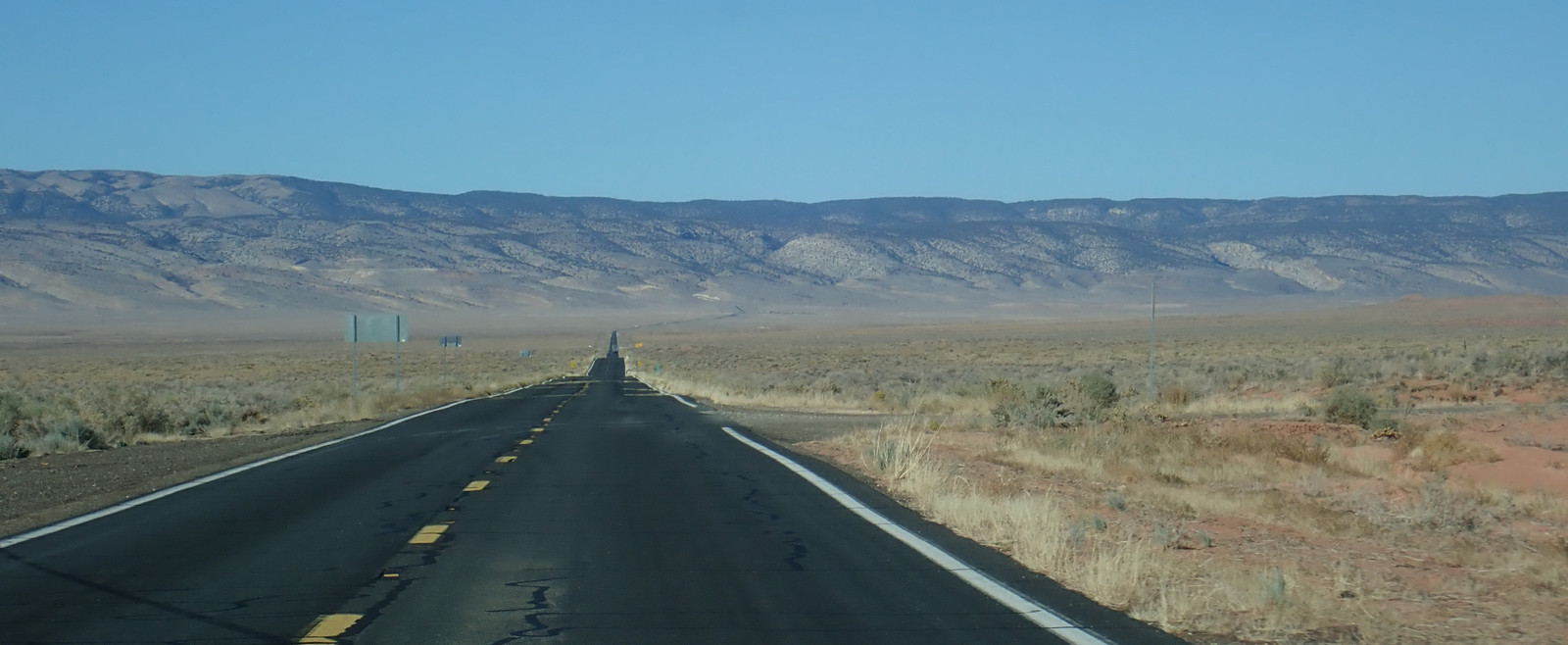
Can you guess where, on the map, that transition happens? Again, this is the sort of stuff we prefer to drive when we can. One annoyance I have with the Volt nav system is that it stops showing anything but interstates and huge roads as you zoom out, rather early. Perhaps, even if I zoom out fairly far, you might consider showing the road I’m driving on?
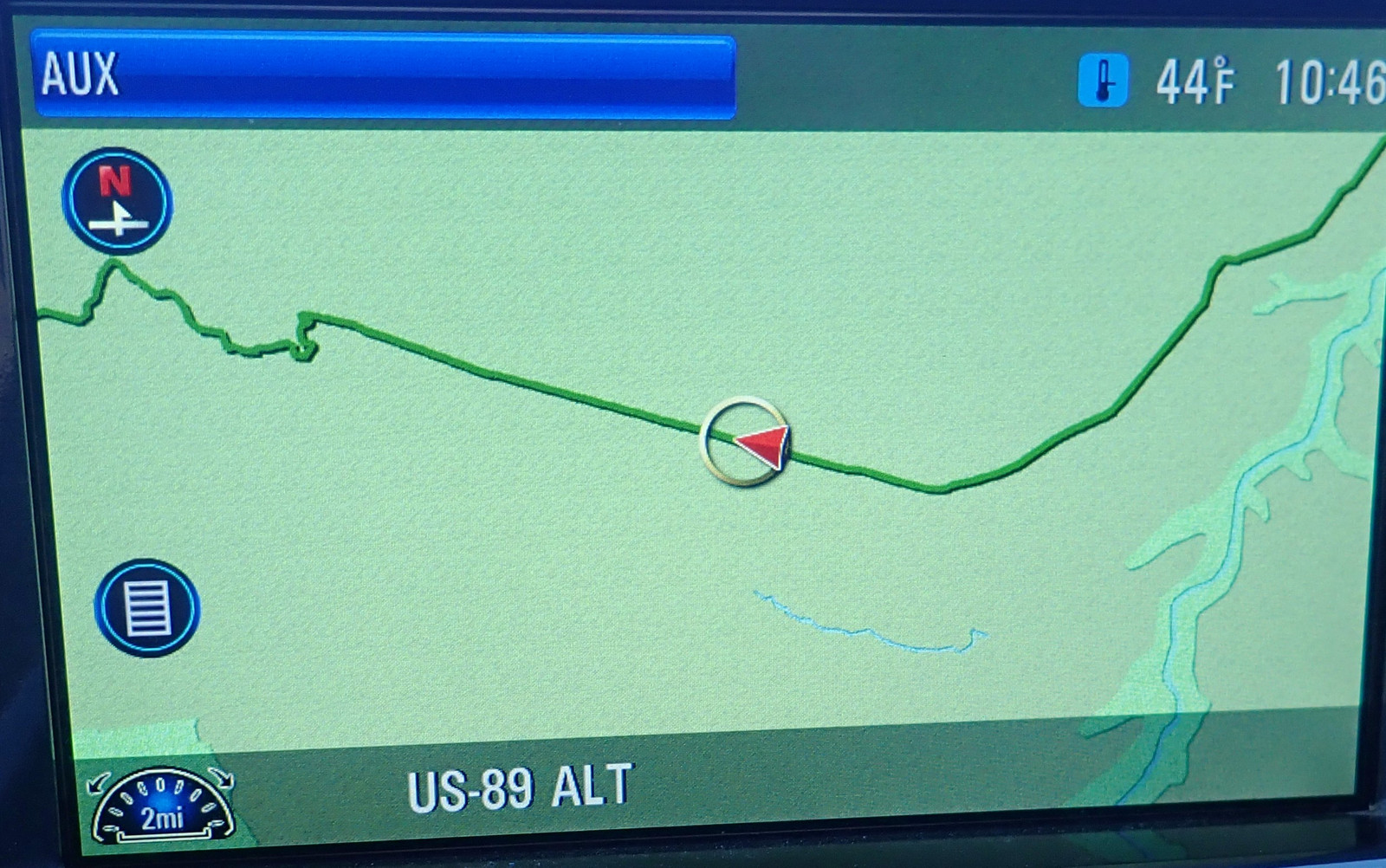
We also made a stop at the Coral Sand Dunes - which are, in fact, very pink. Sand dunes are a great spot to burn off energy, because kids (and adults) will chew through a ton of energy walking through soft, exceedingly round sand.
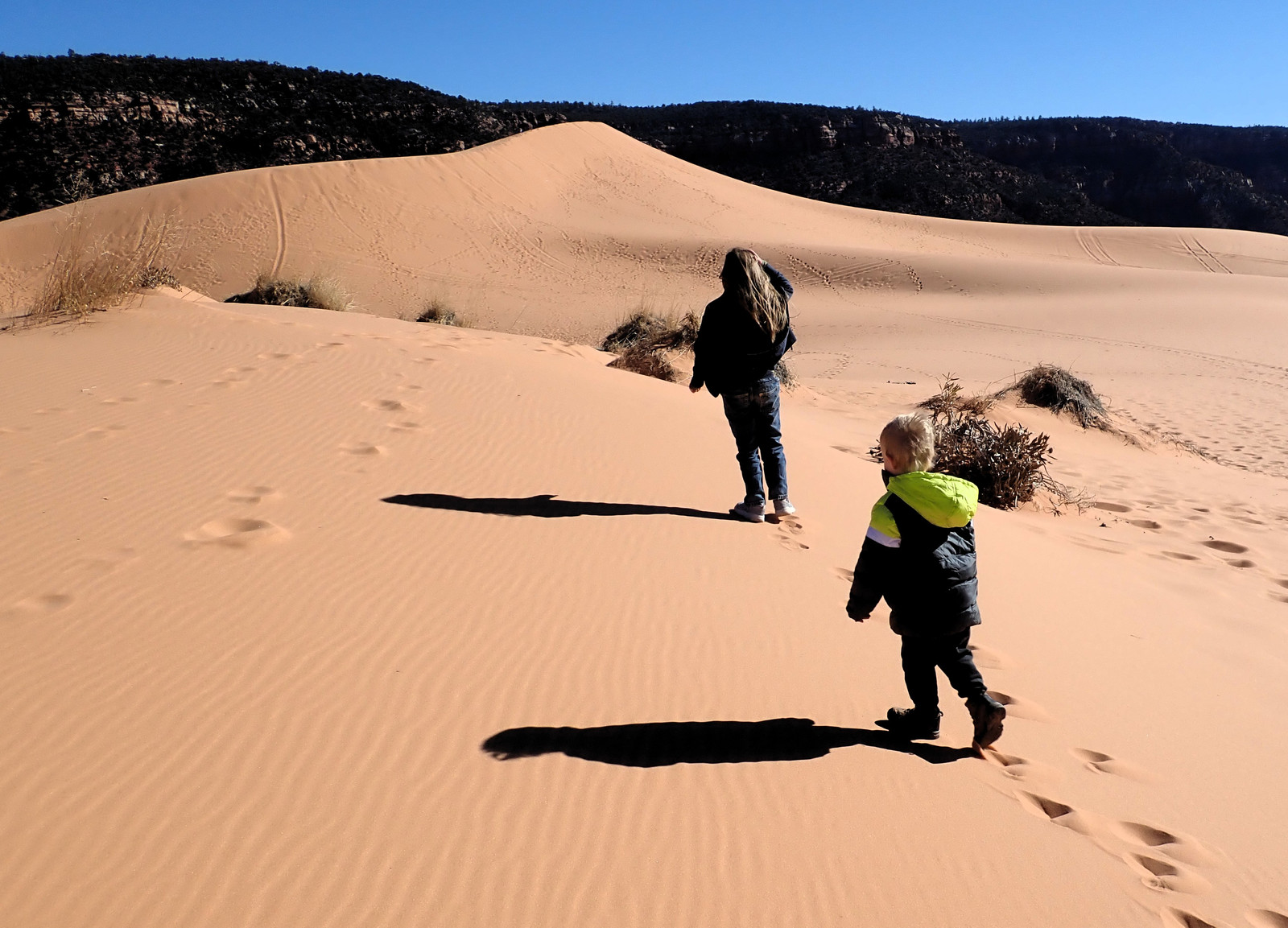
In addition to being a play area, it’s an off-highway vehicle area, so we saw quite a few ATVs and sand rail type vehicles blasting around, plus some old pickups that had been turned into offroaders. There’s an awful lot of money that goes into being able to carve ruts in sand dunes here.

We tried to slide down the dunes, and it just never quite worked. You can slide down, but it wasn’t more than a slow, gradual slide, lubricated by the sand grains rolling on each other.
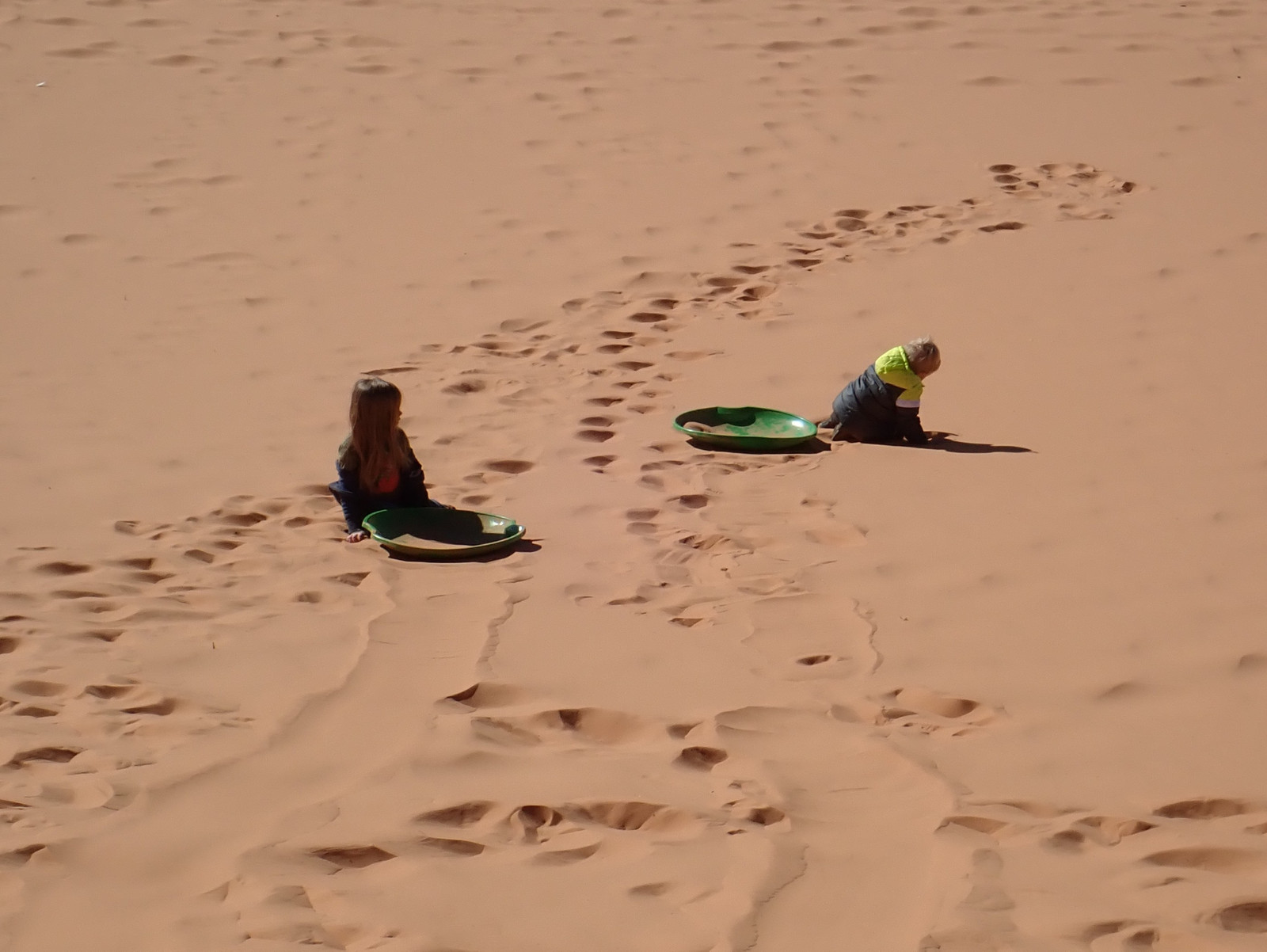
And yet more beautiful rural desert roads and landscapes on the way out! This road isn’t much more than some asphalt over a clean-scraped chunk of desert, near as I can tell.
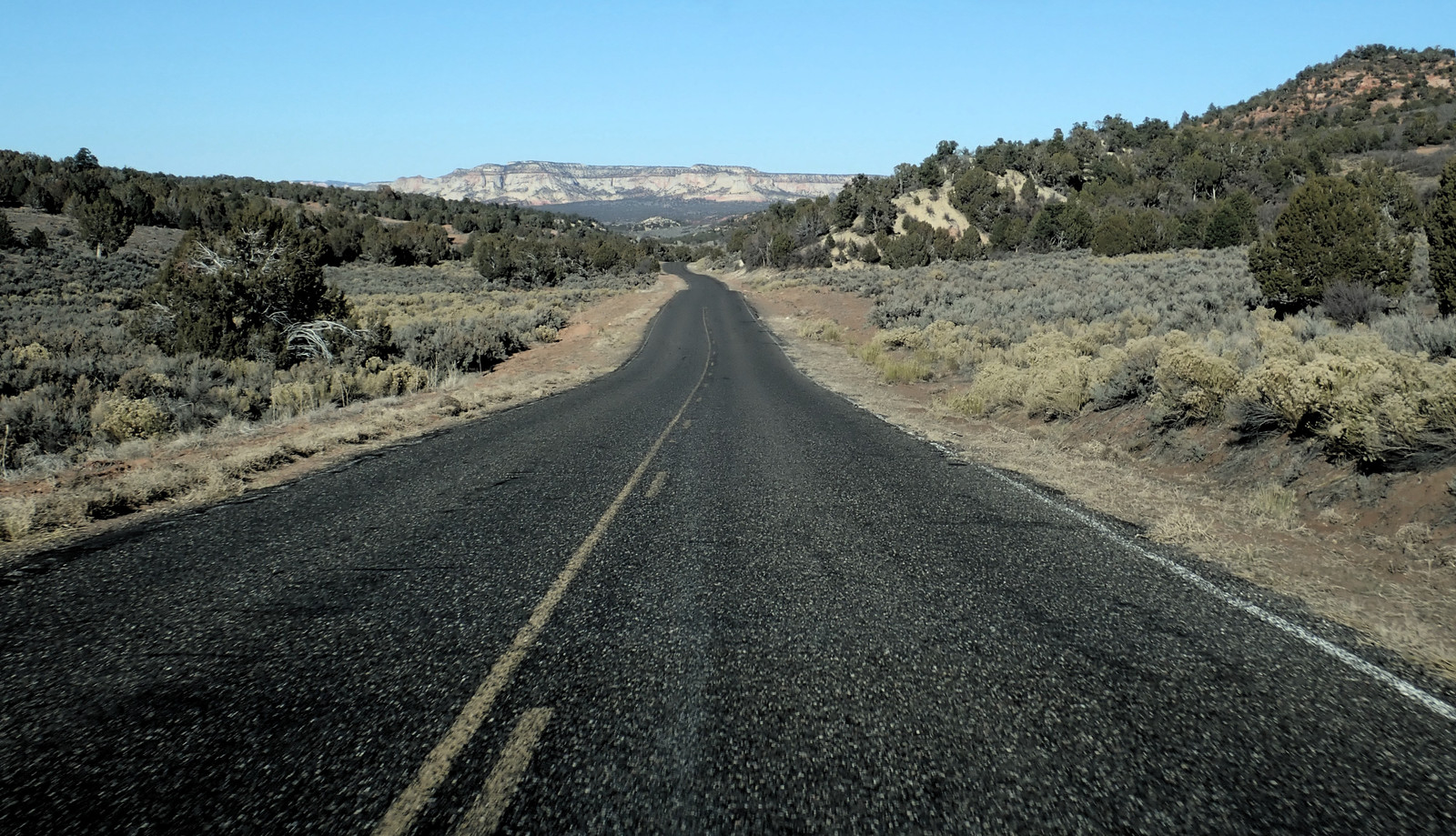
The State of Fast Food in 2021
I’ve grown up with fast food being just one of those boring, reliable things on road trips. No, a McDonalds isn’t going to be amazing food. But it will be open, fast, and more or less consistent across the country. In 2021? This is no longer the case. Fast food is staggeringly expensive ($46 for a family of four at a Subway), incredibly erratic (we came across several places that were closed, one of which had a human recording greeting you at the drive through, just… nobody listening), and some of which were both glacially slow (half an hour to get a wrong order filled at a McDonalds), and of questionable food quality (my wife ended up with something that seemed an awful lot like food poisoning and we blame the slow McDonalds).
We hadn’t really bothered with detailed food plans, because… I mean, there’s always a McDonalds or Wendys or something, right? If we had to do the trip again, we’d pack a cooler and do a lot more “sandwiches at rest stops” sort of food. It really shocked both of us just how bad things were - we don’t eat out very often around here, so the current state of the fast food industry was rather startling.
Traveling With a KaiOS Device
For the past few months (since the Apple CSAM stuff came out), I’ve been attempting to work out what life without a smartphone looks like. My current device is a KaiOS Flip IV, and while it works for general use, traveling with it is a bit painful. There was an awful lot of reliance on my wife’s iPhone for “Ok, what’s at the next exit?” sort of stuff. The car navigation was OK for it (not amazing), and we probably could have done without some of the map work, but while the Flip does have Google Maps, they’re not nearly as useful as they are on a fast touchscreen. Also, group texting remains somewhat painful, with the device falling back to “Send a SMS to each person” if it can’t manage a data connection. However, I’ve also seen iOS devices do this at times, in conditions I don’t understand, so… group texting is hard.
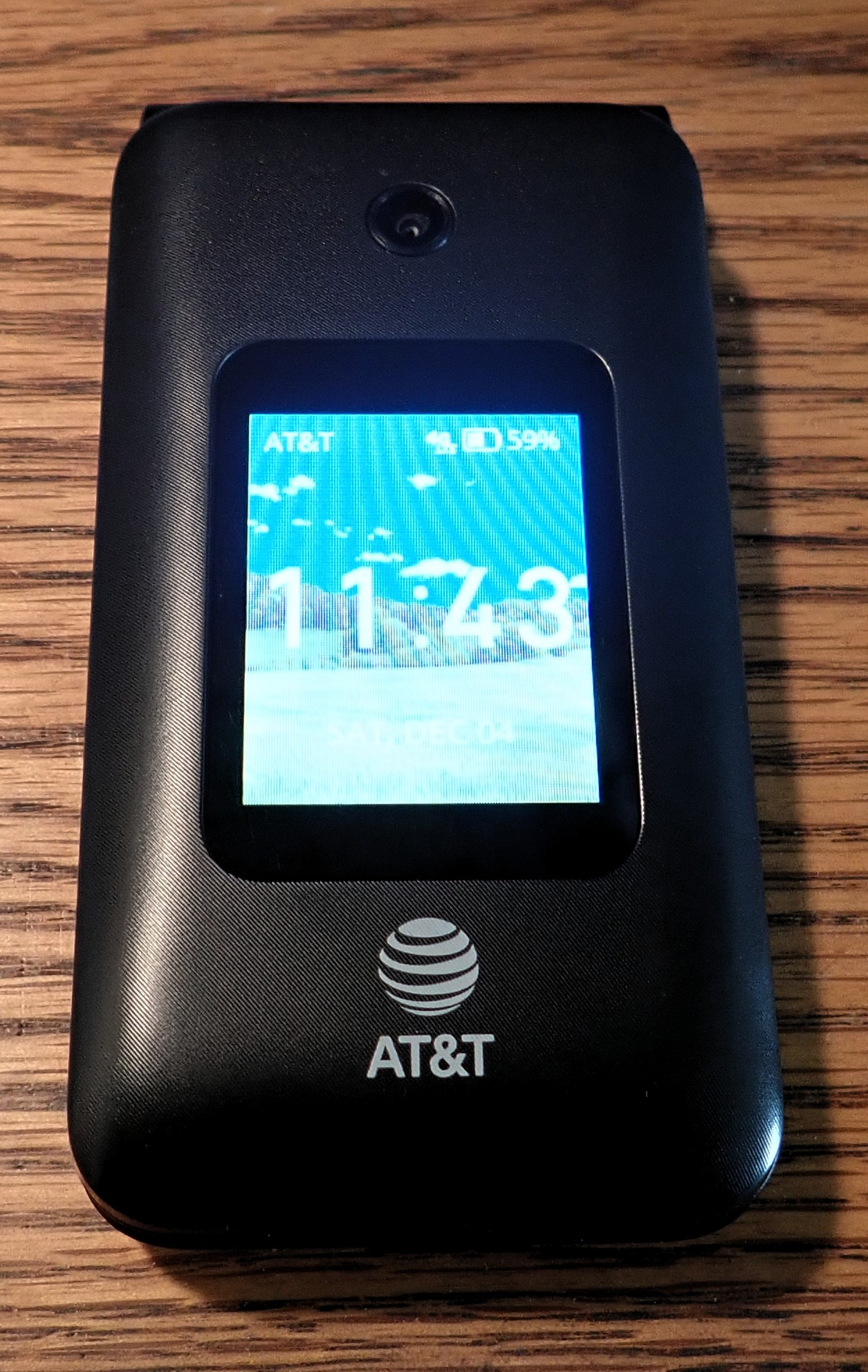
For some of what we did, things like “Find my Friend” functionality would have been very useful as well - trying to find a group of people at an Iron Man race, when there were tens of thousands of people around, is tricky. We managed it, but “Oh, hey, you’re over here on the map…” would have saved quite a bit of time.
And the reality is, we’ve done all these things before smartphones, so none of them are critical. It’s just interesting how rapidly we’ve collectively gotten used to all these functions - and how much I’m used to them as well. You can travel without a smartphone. Just plan ahead a bit more.
Traveling With a Three Year Old
There are many, many things I could say about doing 2600 miles in a small car with a three year old and a six year old. However, they mostly sum up to, “This is a unique experience, an excellent family bonding adventure, and leads to many memories. You should totally do it and report back.”
If you’ve ever tried this, you know exactly what I’m talking about. ;-)
We don’t use “devices” to drug the kids on travel, and while we didn’t get through nearly as many audiobooks as we’d hoped to, we did get through quite a few, learned a lot about what toys entertain a three year old for hours on end (the “magic water books” are amazing, bring several), and were reminded just how well our kids sleep in a car (they don’t).
Total Energy Consumption
While I didn’t keep insanely detailed energy records for the trip counting every charging session, I can say that we covered 2600 miles on just under 64 gallons of gas (mostly E10, a bit of E0 in the mix when I could find it). This works out to 40.8mpg, though this number, being a Volt, does include electric miles in the math. We did around 300 miles or so on electric (give or take, but with one exception, if we weren’t driving, we were charging), which leads to a gas economy of around 36mpg on gas. Slightly worse than I was hoping for (I was aiming for 40 on gas), but I didn’t realize we’d be doing 80+mph for large parts of the trip, and I’ve never run full tanks through the Volt in the mountains before. That little engine is working really hard!
You are Free to Volt About the Country!
This trip is a perfect example of why I love the PHEVs like the Volt so, so much. We use very little fuel in our regular trips into town, but we can take whatever interesting backroads we want on longer trips without having to worry about finding charging (or planning for a charging station that turns out to be offline for whatever reason or another). It covers all the cases for us, very nicely. A few years back, I argued that you should buy a Chevy Volt - and nothing has changed except that with where prices are, a Gen 2 is probably the right option now. They’re great cars that do just about everything you’d want!
Comments
Comments are handled on my Discourse forum - you'll need to create an account there to post comments.If you've found this post useful, insightful, or informative, why not support me on Ko-fi? And if you'd like to be notified of new posts (I post every two weeks), you can follow my blog via email! Of course, if you like RSS, I support that too.
